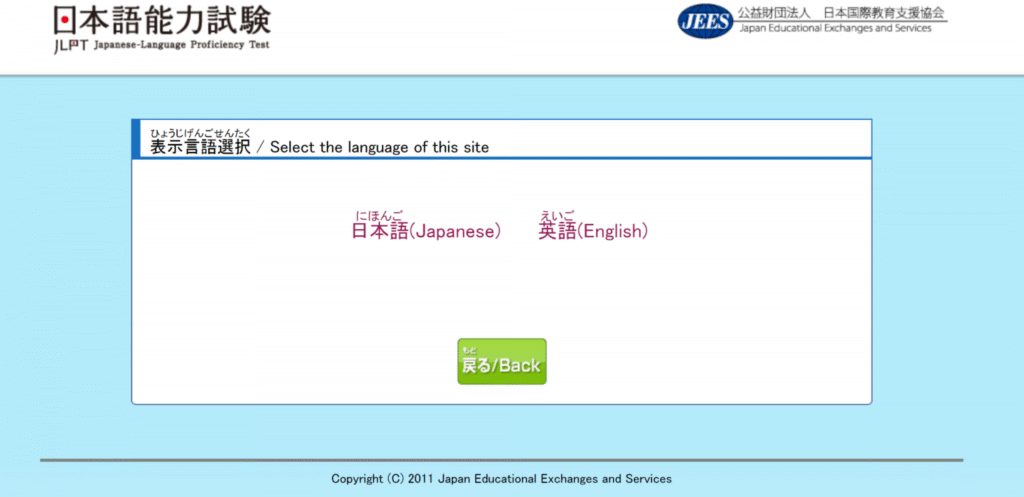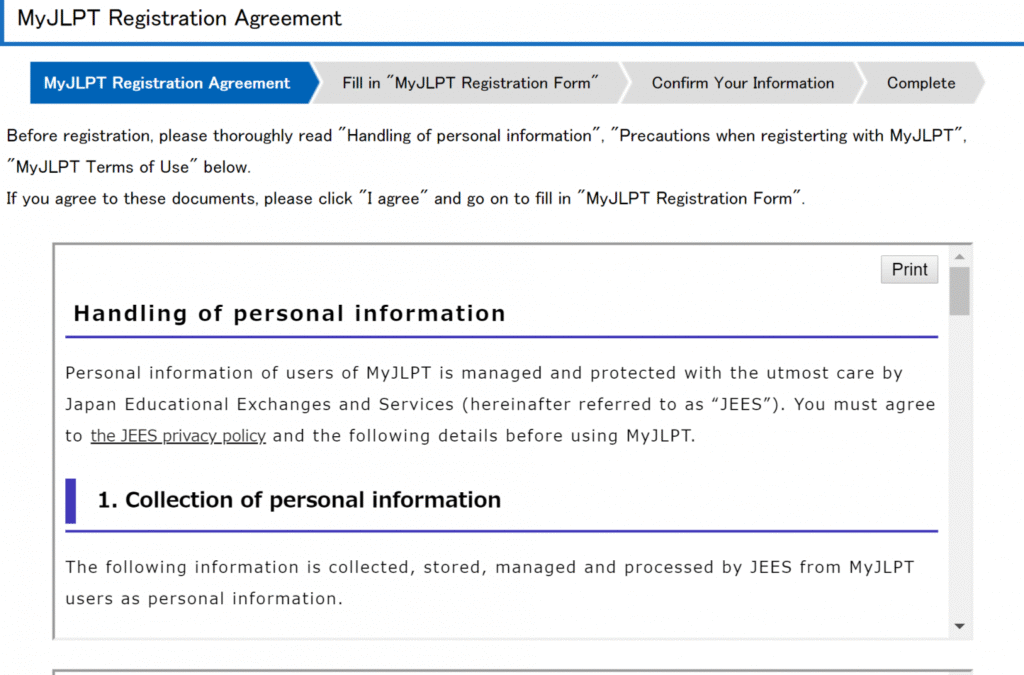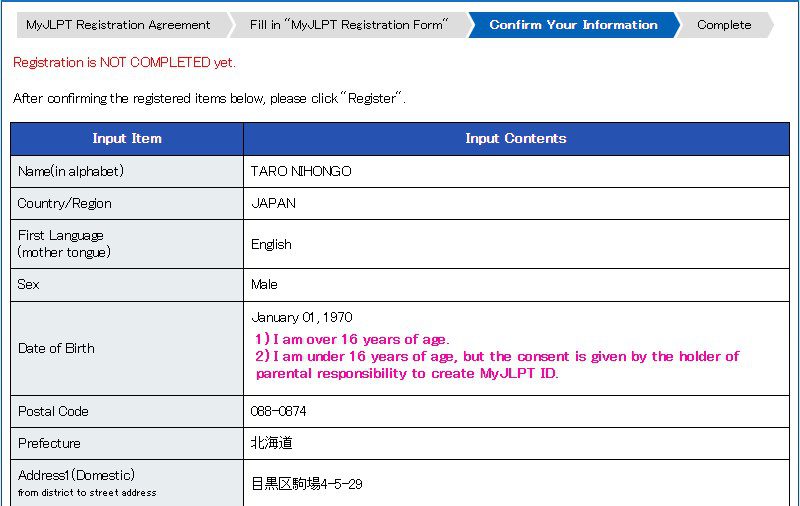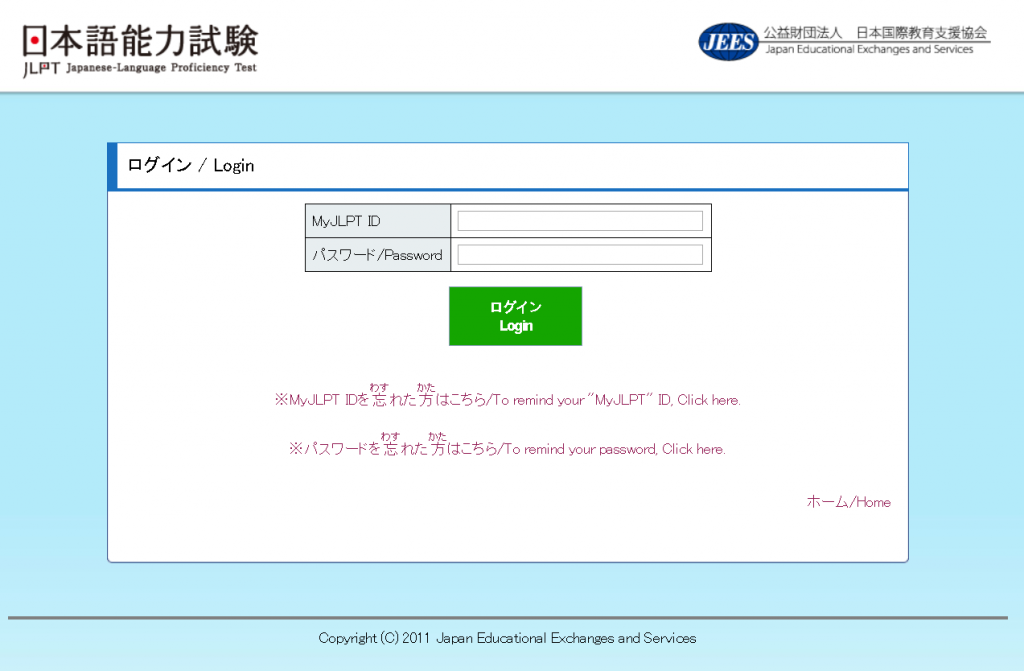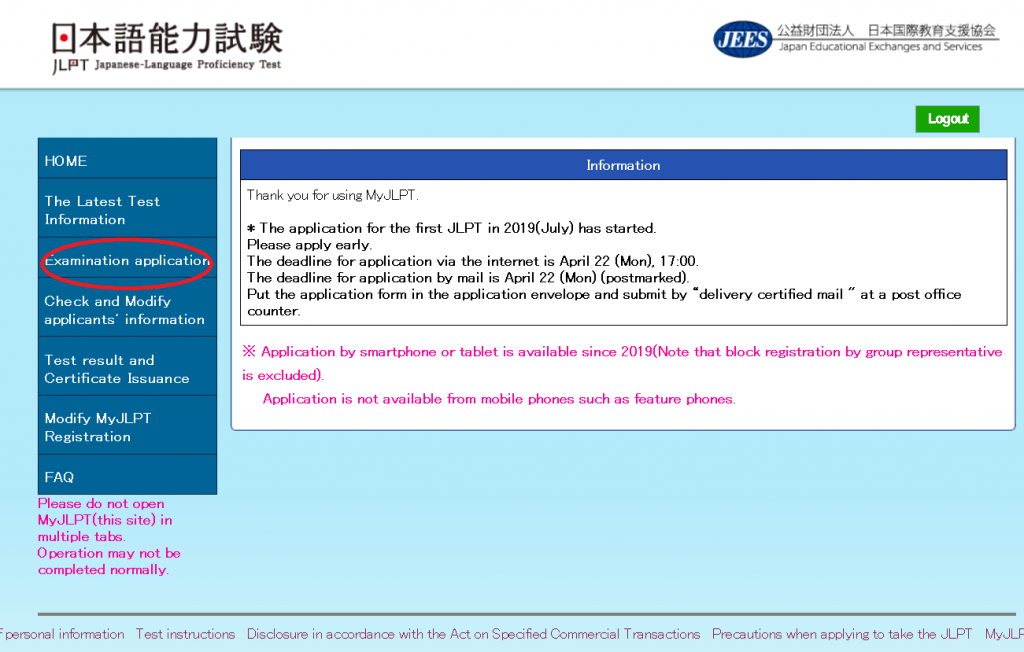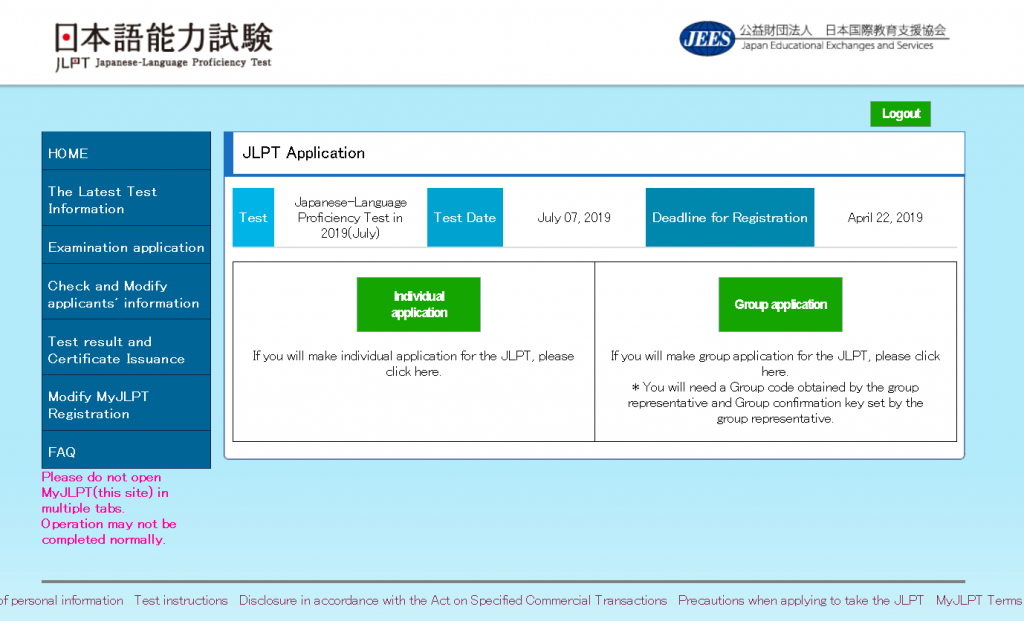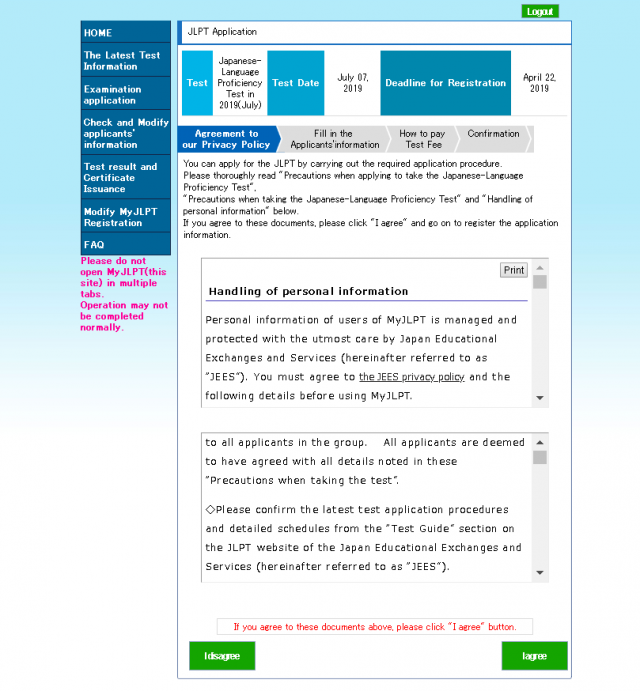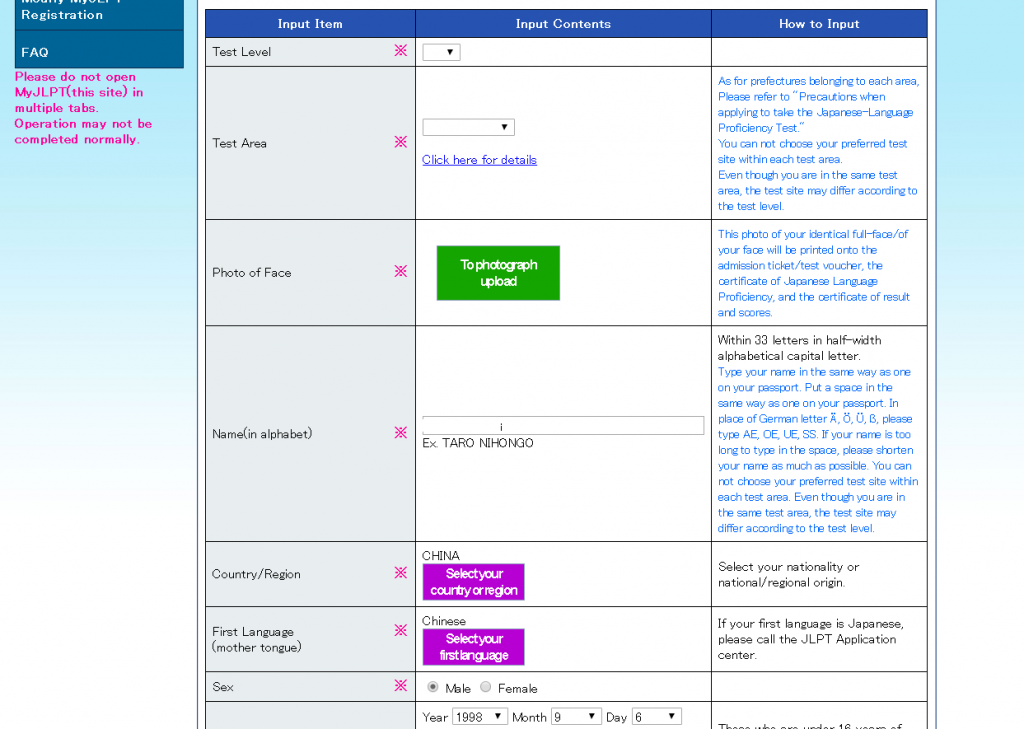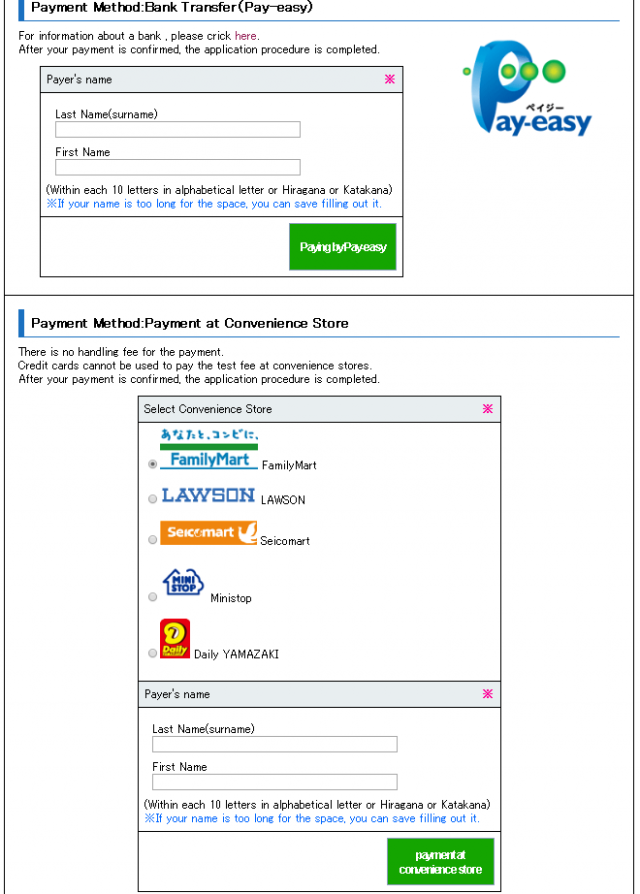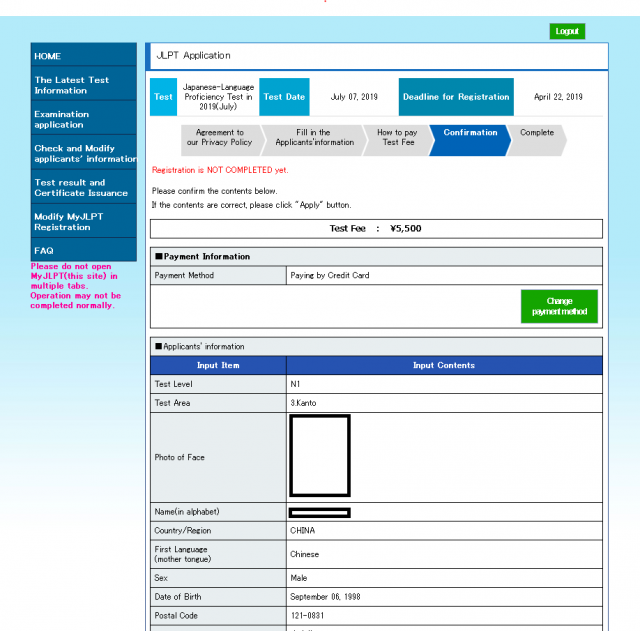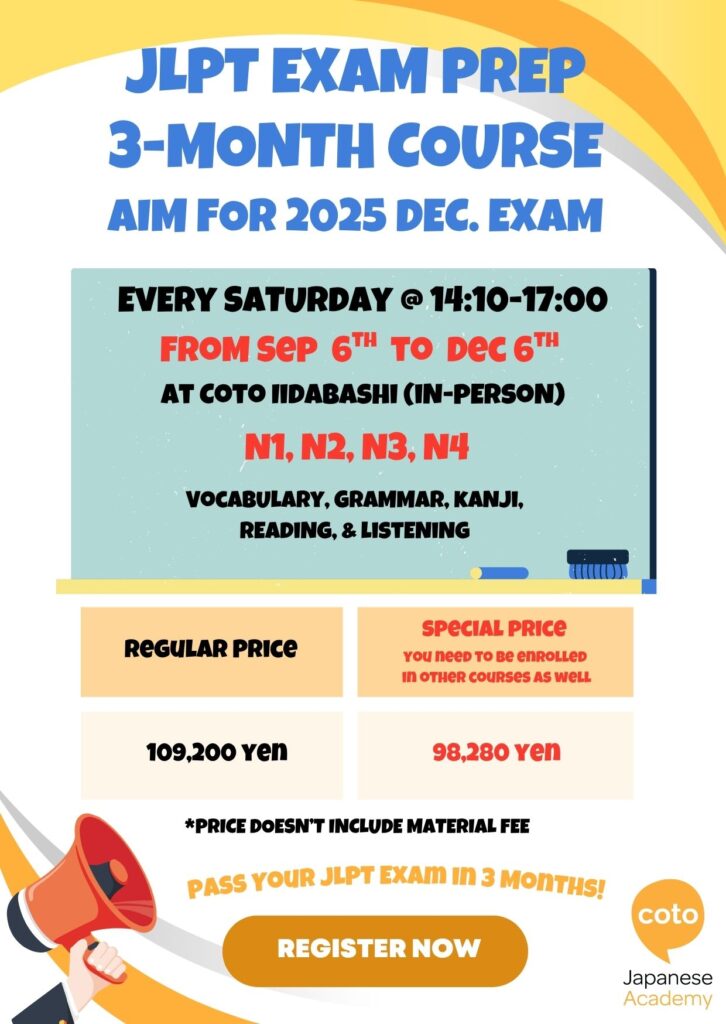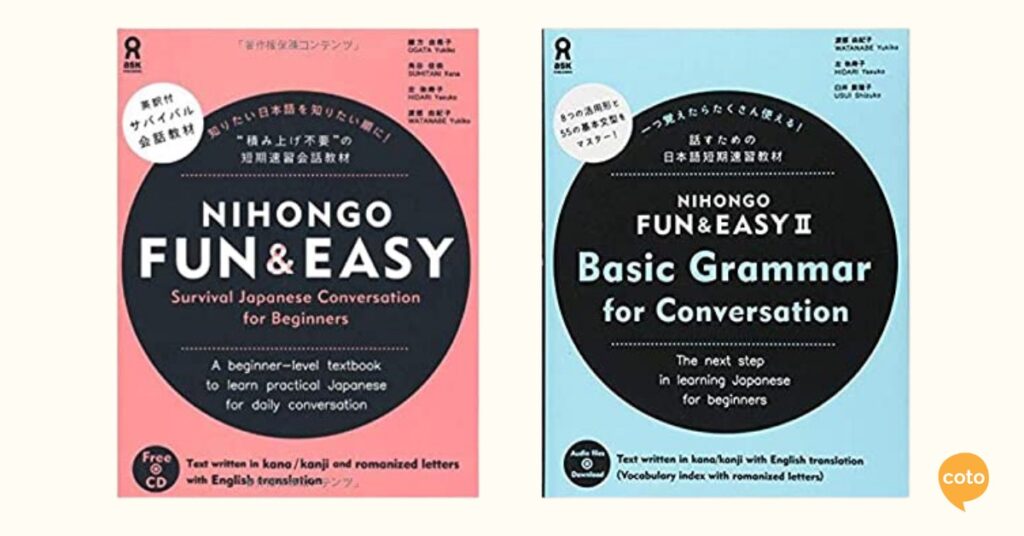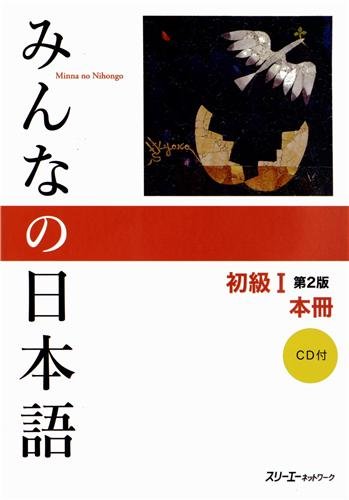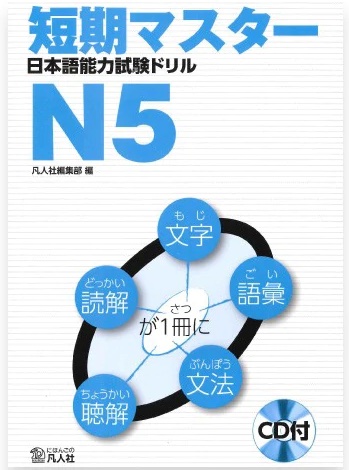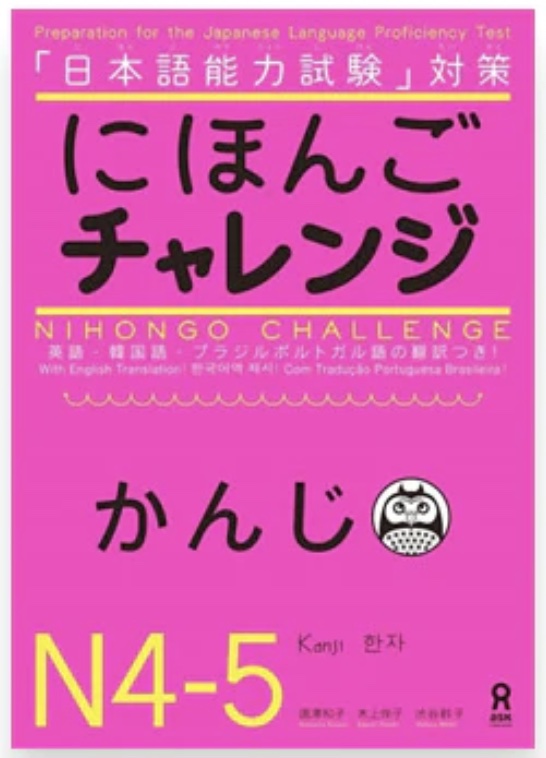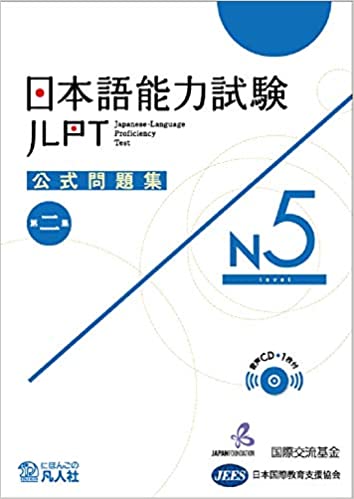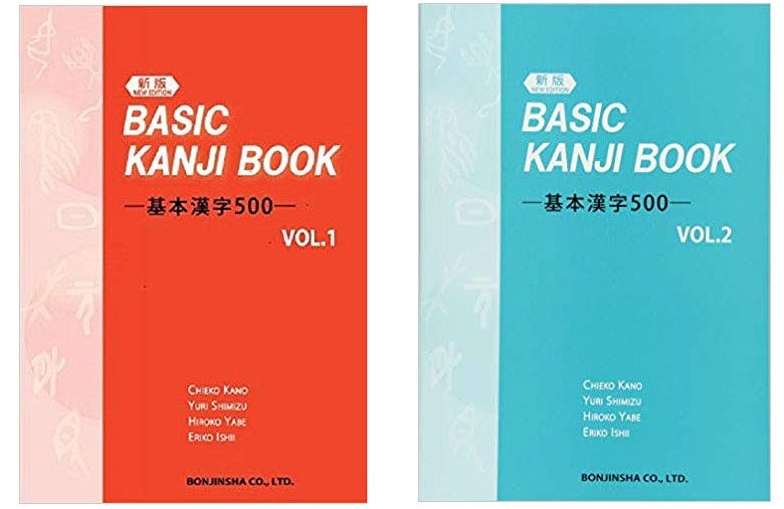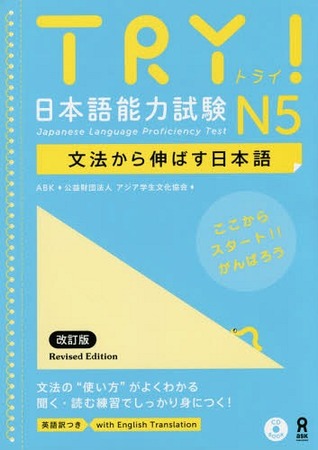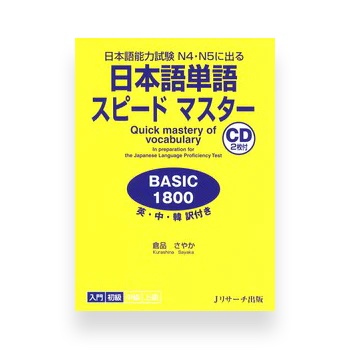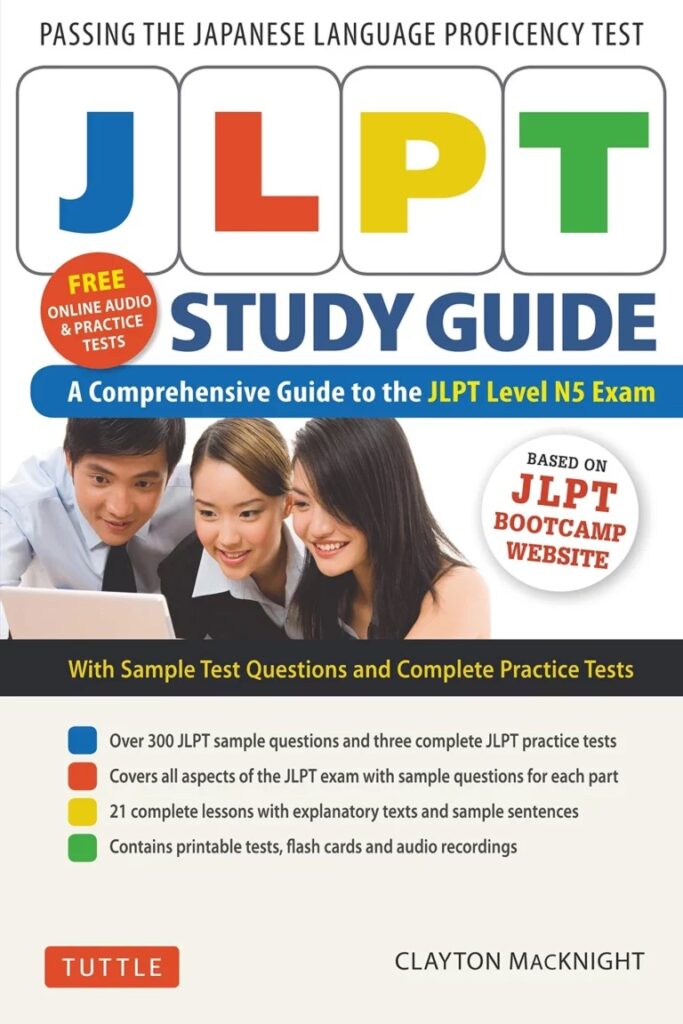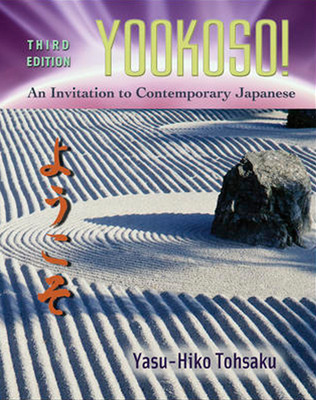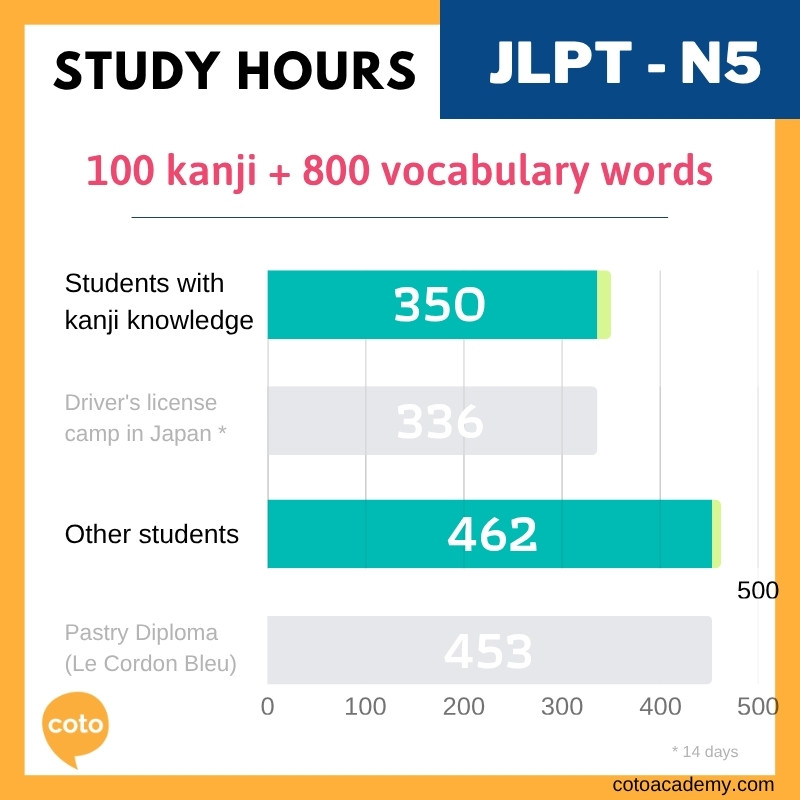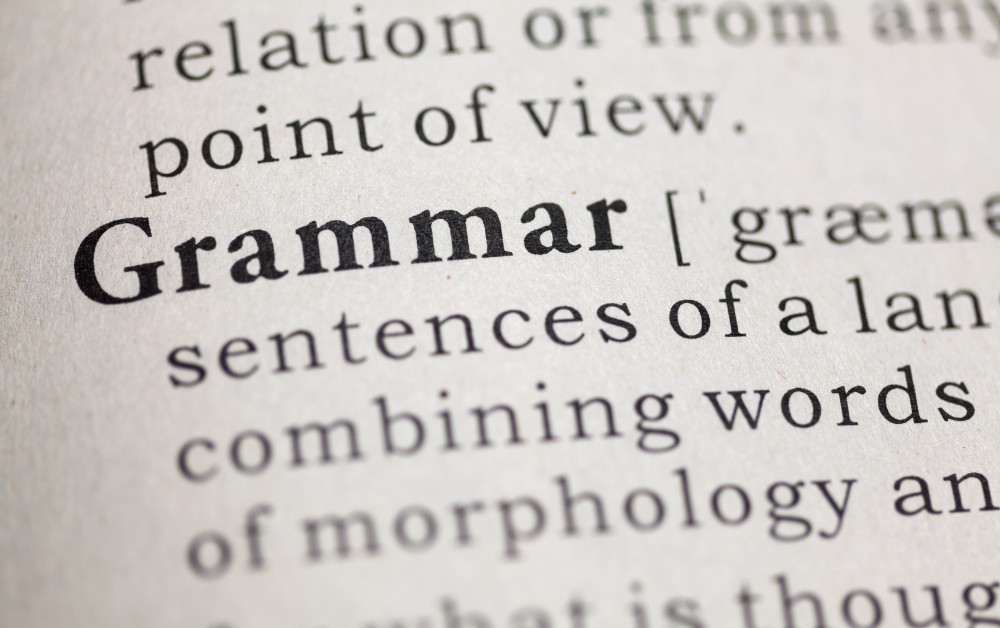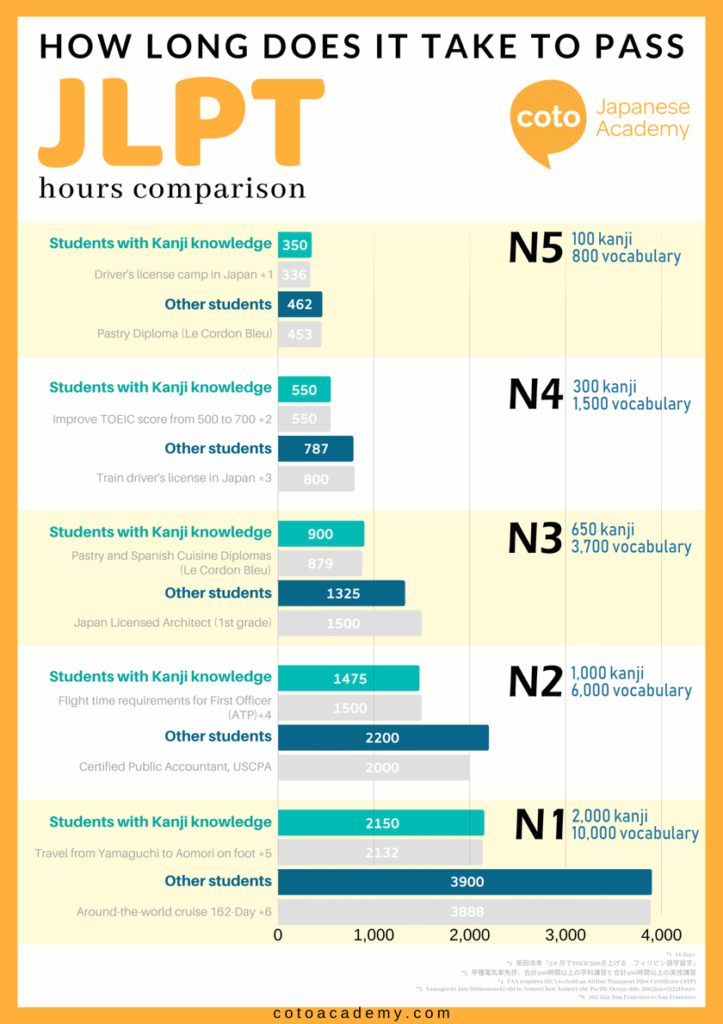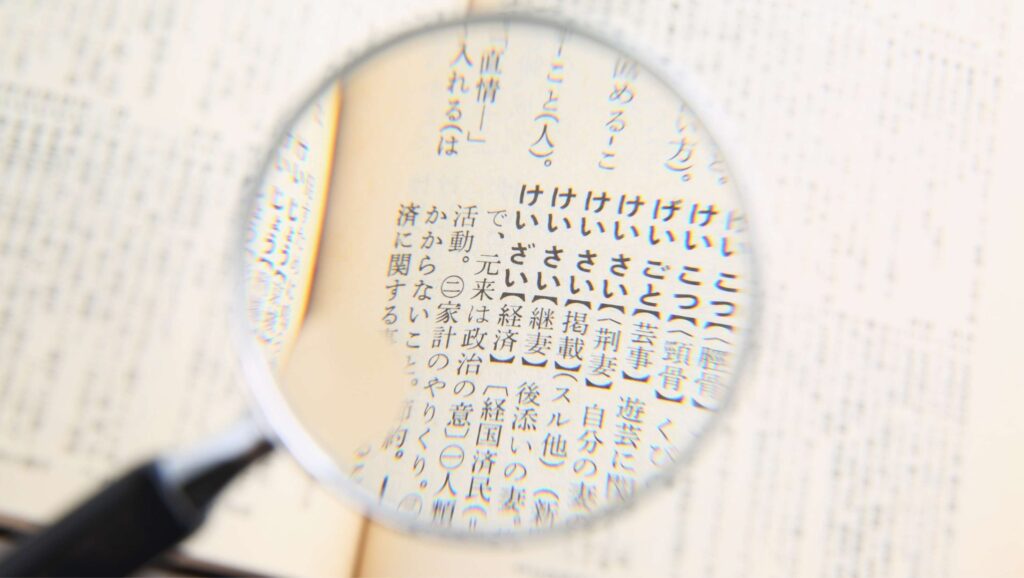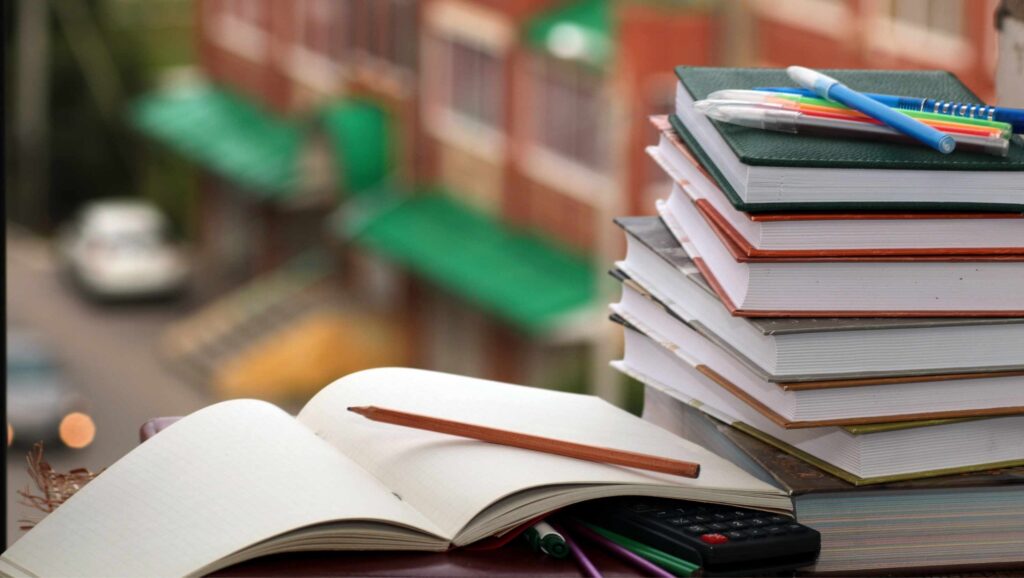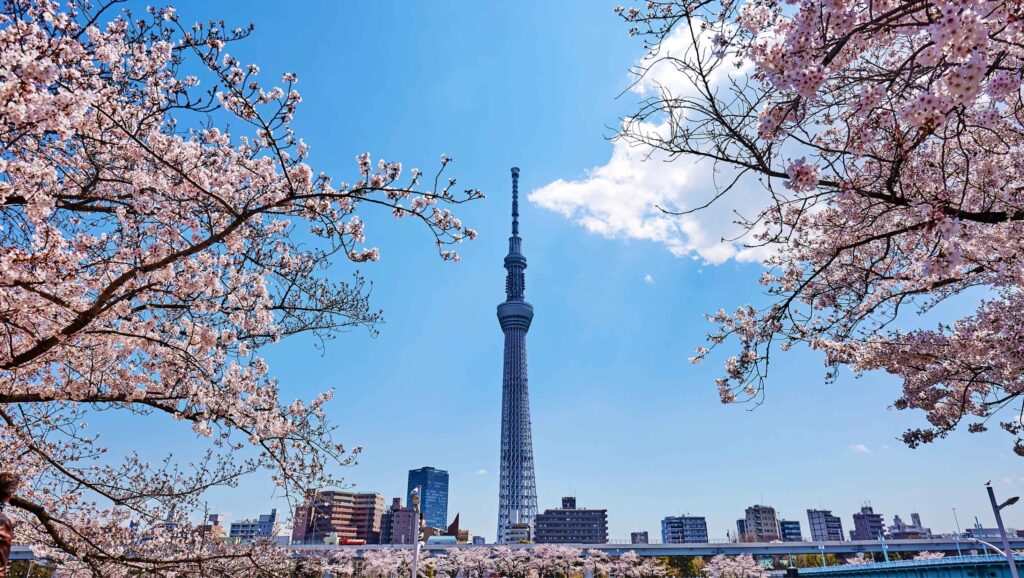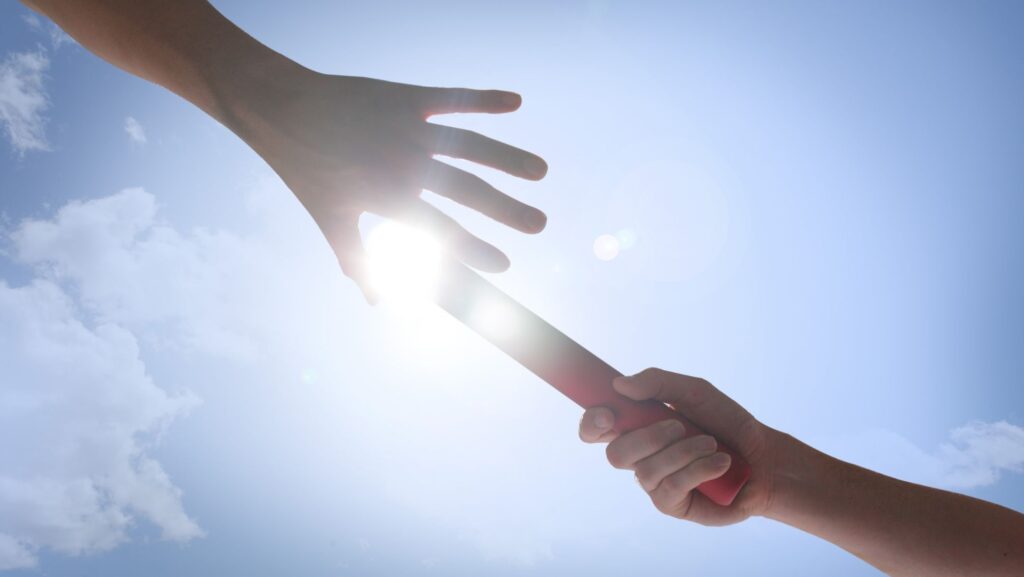If you’re preparing for the JLPT N3 or just stepping into intermediate-level Japanese, you’re entering an exciting stage. The JLPT N3 vocabulary list includes around 3,750 words, which contain a mix of practical terms you’ll encounter in everyday conversations, at school, in the workplace, and even in formal settings.
While N3 is often considered one of the more challenging JLPT levels, with a passing rate of only around 40%, success is absolutely within reach. The key lies in building a solid vocabulary foundation, mastering the 650 kanji that may appear, and staying consistent with mock exams and listening practice.
To help you stay on track, we’ve created a complete JLPT N3 vocabulary list, thoughtfully organized by theme.
Note: This list includes only new vocabulary introduced at the JLPT N3 level. It does not cover words already studied in JLPT N4 and N5. If you’re just starting out or need a refresher, be sure to check out our full JLPT N4 Vocabulary List and JLPT N5 Vocabulary List to build a strong foundation before moving on.
Pass the JLPT with Coto Academy!
Getting ready for the JLPT? Boost your chances of passing with Coto Academy’s JLPT Prep Course — designed for busy learners. With just 3 focused hours per week, you’ll turn your current Japanese skills into real test results in 3 months.
JLPT N3 Nouns Vocabulary
Nouns, or meishi (名詞), make up a large portion of the vocabulary you’ll learn at the JLPT N3 vocabulary. In this list, we’ve sorted them alphabetically for easier reference.
If you’re using flashcard tools like Anki, we recommend you tag the nouns based on specific categories. Some JLPT N3 vocabulary books and pocket guides also organize words this way, which can be especially helpful for building vocabulary in context!
| Japanese | Kana | English Translation |
| グループ | – | group |
| ハイキング | – | hiking |
| メモ | – | memorandum |
| アルバム | – | album |
| コード | – | code,cord,chord |
| ユーモア | – | humor |
| ボール | – | ball,bowl |
| ソファー | – | sofa,couch |
| ピクニック | – | picnic |
| バン | – | bun,van |
| おや | – | parents |
| カー | – | car |
| チャンス | – | chance,opportunity |
| ノック | – | knock |
| アイロン | – | iron |
| マーケット | — | market |
| ケース | ― | case |
| パス | ― | pass, path |
| タオル | ― | towel |
| パーセント | ― | percent |
| ミス | ― | mistake, Miss |
| ダイヤ | ― | diagram, diamond, schedule |
| クリスマス | ― | Christmas |
| 愛 | あい | love |
| 合図 | あいず | signal |
| 相手 | あいて | companion, opponent |
| 明かり | あかり | light, brightness |
| 握手 | あくしゅ | handshake |
| 汗 | あせ | sweat |
| 辺り | あたり | vicinity, nearby |
| 辺り | あたり | nearby |
| 集まり | あつまり | gathering |
| 跡 | あと | trace, mark |
| 穴 | あな | hole |
| 誤り | あやまり | error |
| 嵐 | あらし | storm |
| 現れ | あらわれ | embodiment |
| 哀れ | あわれ | pity |
| 案 | あん | plan |
| 暗記 | あんき | memorization |
| 暗記 | あんき | memorization, learning by heart |
| 胃 | い | stomach |
| 委員 | いいん | committee member |
| 意外 | いがい | unexpected (used as noun/adj) |
| 意外 | いがい | unexpected, surprising |
| 行き | いき | going |
| 息 | いき | breath |
| 勢い | いきおい | force, energy |
| 生き物 | いきもの | living thing, creature |
| 幾つ | いくつ | how many? |
| 意思 | いし | intention, purpose |
| 医師 | いし | doctor |
| 維持 | いじ | maintenance |
| 意識 | いしき | consciousness, senses |
| 泉 | いずみ | spring |
| 以前 | いぜん | before, ago |
| 板 | いた | board |
| 偉大 | いだい | greatness |
| 痛み | いたみ | pain, ache, grief |
| 痛み | いたみ | pain, ache, sore, grief, distress |
| 位置 | いち | place, situation, position, location |
| 位置 | いち | position, location |
| 市場 | いちば | market |
| 一番 | いちばん | best, number one |
| 一家 | いっか | family, household |
| 一瞬 | いっしゅん | moment, instant |
| 一生 | いっしょう | whole life |
| 一層 | いっそう | much more |
| 一致 | いっち | agreement |
| 移動 | いどう | movement, migration |
| 稲 | いね | rice plant |
| 居眠り | いねむり | dozing |
| 命 | いのち | command,decree,life,destiny |
| 違反 | いはん | violation |
| 違反 | いはん | violation (of law), transgression, infringement, breach |
| 衣服 | いふく | clothes |
| 居間 | いま | living room |
| 依頼 | いらい | request |
| 以来 | いらい | since |
| 以来 | いらい | since, henceforth |
| 医療 | いりょう | medical treatment |
| 岩 | いわ | rock, crag |
| 祝い | いわい | celebration |
| 印刷 | いんさつ | printing |
| 印象 | いんしょう | impression |
| 印象 | いんしょう | impression |
| 魚 | うお | fish |
| 魚 | うお | fish |
| 兎 | うさぎ | rabbit,hare,cony |
| 後 | うしろ | back, behind, after |
| 嘘 | うそ | lie |
| 内 | うち | inside |
| 内 | うち | inside |
| 馬 | うま | horse |
| 梅 | うめ | plum,plum-tree,lowest (of a three-tier ranking system) |
| 噂 | うわさ | rumour, report, gossip |
| 噂 | うわさ | rumour, report, gossip, common talk |
| 運 | うん | fortune, luck |
| 運転 | うんてん | driving |
| 運動 | うんどう | exercise |
| 永遠 | えいえん | eternity |
| 永久 | えいきゅう | eternity |
| 影響 | えいきょう | influence |
| 営業 | えいぎょう | business |
| 衛星 | えいせい | satellite |
| 笑顔 | えがお | smiling face |
| 餌 | えさ | feed |
| 円 | えん | circle,money |
| 延期 | えんき | postponement |
| 演技 | えんぎ | performance |
| 援助 | えんじょ | assistance, aid, support |
| 演説 | えんぜつ | speech |
| 演奏 | えんそう | musical performance |
| 遠慮 | えんりょ | diffidence,restraint,reserve |
| 老い | おい | old age |
| 王 | おう | king, ruler, sovereign, monarch |
| 王 | おう | king |
| 王様 | おうさま | king |
| 王子 | おうじ | prince |
| 横断 | おうだん | crossing |
| 横断 | おうだん | crossing |
| 覆う | おおう | to cover, to hide, to conceal, to wrap, to disguise |
| 大家 | おおや | rich family, distinguished family |
| 大家 | おおや | rich family, landlord |
| 沖 | おき | open sea |
| 奥 | おく | interior |
| 奥 | おく | interior, inner part |
| 汚染 | おせん | pollution, contamination |
| 男の人 | おとこのひと | man |
| お腹 | おなか | stomach |
| 鬼 | おに | demon, ogre |
| 帯 | おび | band, belt |
| 思い出 | おもいで | memory |
| 泳ぎ | およぎ | swimming |
| 泳ぎ | およぎ | swimming |
| 終 | おわり | the end |
| 終 | おわり | the end |
| 恩 | おん | favor, obligation |
| 温度 | おんど | temperature |
| 可 | か | passable |
| 回 | かい | counter for occurrences |
| 回 | かい | counter for occurrences |
| 会 | かい | meeting |
| 会員 | かいいん | member, the membership |
| 会員 | かいいん | member |
| 絵画 | かいが | painting |
| 海外 | かいがい | overseas |
| 会計 | かいけい | account, finance, accountant |
| 会計 | かいけい | accounting |
| 外交 | がいこう | diplomacy |
| 外交 | がいこう | diplomacy |
| 開始 | かいし | start |
| 解釈 | かいしゃく | interpretation |
| 外出 | がいしゅつ | outing |
| 香り | かおり | fragrance, scent |
| 画家 | がか | painter, artist |
| 価格 | かかく | price |
| 化学 | かがく | chemistry |
| 係 | かかり | person in charge |
| 鍵 | かぎ | key |
| 家具 | かぐ | furniture |
| 確実 | かくじつ | certainty,reliability,soundness |
| 学者 | がくしゃ | scholar |
| 学者 | がくしゃ | scholar |
| 学習 | がくしゅう | study, learning |
| 拡大 | かくだい | magnification,enlargement |
| 陰 | かげ | shade, shadow, other side |
| 陰 | かげ | shade, shadow, other side |
| 過去 | かこ | the past |
| 籠 | かご | basket |
| 貸し | かし | loan, lending |
| 菓子 | かし | sweets |
| 菓子 | かし | pastry |
| 歌手 | かしゅ | singer |
| 歌手 | かしゅ | singer |
| 数 | かず | number |
| 肩 | かた | shoulder |
| 肩 | かた | shoulder |
| 刀 | かたな | sword |
| 刀 | かたな | sword, saber, knife, engraving tool |
| 価値 | かち | value |
| 勝ち | かち | win, victory |
| 勝ち | かち | victory |
| 活気 | かっき | liveliness |
| 学期 | がっき | term (school) |
| 学期 | がっき | semester |
| 格好 | かっこう | appearance, shape |
| 活動 | かつどう | activity |
| 活用 | かつよう | conjugation, practical use |
| 活用 | かつよう | usage, application |
| 金 | かね | gold |
| 株 | かぶ | stock, share |
| 我慢 | がまん | patience |
| 上 | かみ | (1) first volume, (2) superior quality, (3) governmental |
| 神 | かみ | god |
| 上 | かみ | superior, first part |
| 神 | かみ | god |
| 雷 | かみなり | thunder |
| 髪の毛 | かみのけ | hair |
| 科目 | かもく | school subject |
| 火曜 | かよう | Tuesday |
| 空 | から | sky |
| 空 | から | sky |
| 川 | かわ | river |
| 河 | かわ | river |
| 缶 | かん | can, tin |
| 考え | かんがえ | thought, idea |
| 感覚 | かんかく | sensation, feeling |
| 観客 | かんきゃく | audience |
| 歓迎 | かんげい | welcome |
| 観光 | かんこう | sightseeing |
| 観光 | かんこう | sightseeing |
| 観察 | かんさつ | observation |
| 感じ | かんじ | feeling, impression |
| 勘定 | かんじょう | calculation, counting, consideration |
| 勘定 | かんじょう | calculation, counting, consideration |
| 関心 | かんしん | concern, interest |
| 感心 | かんしん | admiration |
| 完成 | かんせい | completion |
| 感動 | かんどう | being deeply moved, excitement, impression, deep emotion |
| 感動 | かんどう | deep emotion |
| 監督 | かんとく | supervision |
| 管理 | かんり | management |
| 完了 | かんりょう | completion, conclusion |
| 完了 | かんりょう | completion |
| 関連 | かんれん | relation, connection |
| 記憶 | きおく | memory |
| 気温 | きおん | temperature |
| 気温 | きおん | temperature |
| 機械 | きかい | machine |
| 議会 | ぎかい | parliament |
| 期間 | きかん | period |
| 機関 | きかん | engine, mechanism |
| 企業 | きぎょう | enterprise |
| 機嫌 | きげん | mood |
| 気候 | きこう | climate |
| 岸 | きし | shore |
| 記事 | きじ | news article, report |
| 生地 | きじ | birthplace |
| 生地 | きじ | cloth, fabric |
| 技師 | ぎし | engineer |
| 記者 | きしゃ | reporter |
| 期待 | きたい | expectation, hope |
| 帰宅 | きたく | returning home |
| 議長 | ぎちょう | chairman |
| 記入 | きにゅう | entry, filling in forms |
| 記念 | きねん | commemoration |
| 寄付 | きふ | donation |
| 義務 | ぎむ | duty,obligation |
| 疑問 | ぎもん | doubt, question |
| 逆 | ぎゃく | reverse, opposite |
| 九 | きゅう | nine |
| 球 | きゅう | globe,sphere,ball |
| 休憩 | きゅうけい | rest, break |
| 吸収 | きゅうしゅう | absorption |
| 救助 | きゅうじょ | rescue |
| 給料 | きゅうりょう | salary, wages |
| 教科書 | きょうかしょ | textbook |
| 競技 | きょうぎ | match |
| 供給 | きょうきゅう | supply,provision |
| 教師 | きょうし | teacher |
| 教師 | きょうし | teacher (classroom) |
| 教授 | きょうじゅ | professor |
| 強調 | きょうちょう | emphasis |
| 恐怖 | きょうふ | dread, terror |
| 協力 | きょうりょく | cooperation |
| 強力 | きょうりょく | herculean strength, mountain carrier-guide |
| 強力 | きょうりょく | powerful |
| 許可 | きょか | permission |
| 霧 | きり | fog, mist |
| 切れ | きれ | piece, cloth |
| 議論 | ぎろん | debate |
| 金 | きん | gold |
| 銀 | ぎん | silver |
| 禁煙 | きんえん | no smoking |
| 金額 | きんがく | amount of money |
| 禁止 | きんし | prohibition,ban |
| 金銭 | きんせん | money, cash |
| 金属 | きんぞく | metal |
| 金属 | きんぞく | metal |
| 近代 | きんだい | modern times |
| 緊張 | きんちょう | tension |
| 筋肉 | きんにく | muscle |
| 金融 | きんゆう | finance |
| 金曜 | きんよう | Friday |
| 鎖 | くさり | chain |
| 癖 | くせ | habit |
| 管 | くだ | pipe, tube |
| 管 | くだ | pipe, tube |
| 組合 | くみあい | union |
| 曇 | くもり | cloudiness, cloudy weather, shadow |
| 位 | くらい | rank, about |
| 位 | くらい | grade, rank, about |
| 暮らし | くらし | living, livelihood |
| 暮れ | くれ | year end,sunset,nightfall,end |
| 訓 | くん | native reading |
| 軍 | ぐん | army |
| 軍隊 | ぐんたい | army, troops |
| 軍隊 | ぐんたい | army |
| 訓練 | くんれん | training |
| 下 | げ | under, below, beneath |
| 下 | げ | below |
| 計 | けい | plan |
| 敬意 | けいい | respect |
| 経営 | けいえい | management |
| 計画 | けいかく | plan |
| 景気 | けいき | condition, state, business (condition) |
| 景気 | けいき | economy |
| 経験 | けいけん | experience |
| 傾向 | けいこう | tendency, trend, inclination |
| 傾向 | けいこう | tendency |
| 警告 | けいこく | warning |
| 刑事 | けいじ | detective |
| 掲示 | けいじ | notice |
| 掲示 | けいじ | notice, bulletin |
| 芸術 | げいじゅつ | art |
| 芸術 | げいじゅつ | (fine) art, the arts |
| 契約 | けいやく | contract |
| 経由 | けいゆ | via, route through |
| 怪我 | けが | injury, hurt |
| 化粧 | けしょう | makeup |
| 結果 | けっか | result |
| 欠陥 | けっかん | defect |
| 決心 | けっしん | determination |
| 欠席 | けっせき | absence |
| 決定 | けってい | decision |
| 欠点 | けってん | fault |
| 欠点 | けってん | faults, defect, weakness |
| 月曜 | げつよう | Monday |
| 結論 | けつろん | conclusion |
| 軒 | けん | eaves |
| 県 | けん | prefecture |
| 券 | けん | ticket |
| 見解 | けんかい | opinion |
| 現金 | げんきん | cash |
| 言語 | げんご | language |
| 健康 | けんこう | health |
| 健康 | けんこう | health, sound, wholesome |
| 現在 | げんざい | present, now |
| 現実 | げんじつ | reality |
| 現象 | げんしょう | phenomenon |
| 現状 | げんじょう | present condition |
| 現状 | げんじょう | present condition, existing state, status quo |
| 現代 | げんだい | modern times, nowadays |
| 建築 | けんちく | construction,architecture |
| 見当 | けんとう | estimate, guess |
| 現場 | げんば | scene |
| 憲法 | けんぽう | constitution |
| 権利 | けんり | right,privilege |
| 語 | ご | word, language |
| 恋人 | こいびと | lover, sweetheart |
| 恋人 | こいびと | lover |
| 幸運 | こううん | good fortune |
| 講演 | こうえん | lecture |
| 硬貨 | こうか | coin |
| 効果 | こうか | effect |
| 高価 | こうか | high price |
| 合格 | ごうかく | success (exam) |
| 航空 | こうくう | aviation |
| 光景 | こうけい | scene |
| 攻撃 | こうげき | attack |
| 広告 | こうこく | advertisement |
| 後者 | こうしゃ | the latter |
| 構成 | こうせい | composition |
| 強盗 | ごうとう | robbery |
| 工場 | こうば | factory |
| 幸福 | こうふく | happiness |
| 公平 | こうへい | fairness, justice |
| 考慮 | こうりょ | consideration |
| 氷 | こおり | ice |
| 誤解 | ごかい | misunderstanding |
| 語学 | ごがく | language learning |
| 呼吸 | こきゅう | breath,respiration |
| 故郷 | こきょう | hometown |
| 国語 | こくご | national language |
| 国語 | こくご | national language |
| 黒板 | こくばん | blackboard |
| 黒板 | こくばん | blackboard |
| 克服 | こくふく | conquest, overcoming |
| 国民 | こくみん | national, people, citizen |
| 国民 | こくみん | nation, citizens |
| 穀物 | こくもつ | grain, cereal |
| 腰 | こし | hip |
| 故障 | こしょう | break-down, failure |
| 個人 | こじん | individual, private person |
| 国家 | こっか | nation, country |
| 国会 | こっかい | National Diet,parliament,congress |
| 国境 | こっきょう | border |
| 骨折 | こっせつ | bone fracture |
| 事 | こと | thing, matter |
| 諺 | ことわざ | proverb |
| 粉 | こな | powder |
| 小麦 | こむぎ | wheat |
| 小麦 | こむぎ | wheat |
| 小屋 | こや | hut |
| 今回 | こんかい | this time |
| 今後 | こんご | from now on,hereafter |
| 困難 | こんなん | difficulty |
| 今日 | こんにち | today |
| 婚約 | こんやく | engagement |
| 混乱 | こんらん | confusion |
| 差 | さ | difference,variation |
| 際 | さい | occasion |
| 財産 | ざいさん | property, assets |
| 最中 | さいちゅう | in the middle of |
| 才能 | さいのう | talent |
| 裁判 | さいばん | trial |
| 材料 | ざいりょう | materials |
| 盛り | さかり | serving, helping |
| 作業 | さぎょう | task, work |
| 昨 | さく | last (year/day) |
| 作品 | さくひん | work, opus |
| 作品 | さくひん | work, opus, performance, production |
| 作物 | さくもつ | crops, agricultural produce |
| 座席 | ざせき | seat |
| 札 | さつ | label, ticket |
| 作家 | さっか | writer |
| 作曲 | さっきょく | composition |
| 作曲 | さっきょく | composition, setting (of music) |
| 砂漠 | さばく | desert |
| 左右 | さゆう | left and right, influence |
| 皿 | さら | plate |
| 騒ぎ | さわぎ | uproar |
| 参考 | さんこう | reference |
| 酸素 | さんそ | oxygen |
| 酸素 | さんそ | oxygen |
| 散歩 | さんぽ | walk, stroll |
| 四 | し | four |
| 氏 | し | family name, lineage |
| 詩 | し | poem |
| 幸せ | しあわせ | happiness,good fortune,luck,blessing |
| 時期 | じき | season |
| 刺激 | しげき | stimulus |
| 資源 | しげん | resources |
| 支出 | ししゅつ | expenditure |
| 事情 | じじょう | circumstances |
| 自然 | しぜん | nature |
| 自然 | しぜん | nature, spontaneous |
| 思想 | しそう | thought, idea |
| 舌 | した | tongue |
| 支度 | したく | preparation |
| 七 | しち・なな | seven |
| 失業 | しつぎょう | unemployment |
| 実験 | じっけん | experiment |
| 実行 | じっこう | execution, practice |
| 実際 | じっさい | actual condition, status quo |
| 実施 | じっし | implementation |
| 指導 | しどう | guidance |
| 品 | しな | goods, item |
| 芝生 | しばふ | lawn |
| 支払 | しはらい | payment |
| 死亡 | しぼう | death |
| 資本 | しほん | capital |
| 姉妹 | しまい | sisters |
| 事務 | じむ | office work |
| 下 | しも | below |
| 霜 | しも | frost |
| 借金 | しゃっきん | debt |
| 邪魔 | じゃま | hindrance, obstacle |
| 州 | しゅう | sandbank |
| 銃 | じゅう | gun |
| 十 | じゅう | ten |
| 周囲 | しゅうい | surroundings |
| 収穫 | しゅうかく | harvest |
| 週間 | しゅうかん | week |
| 宗教 | しゅうきょう | religion |
| 重視 | じゅうし | serious consideration |
| 就職 | しゅうしょく | employment |
| 就職 | しゅうしょく | finding employment, inauguration |
| 修正 | しゅうせい | correction |
| 渋滞 | じゅうたい | congestion, delay |
| 住宅 | じゅうたく | residence, housing |
| 集団 | しゅうだん | group, mass |
| 集中 | しゅうちゅう | concentration,focusing the mind |
| 収入 | しゅうにゅう | income |
| 修理 | しゅうり | repair |
| 主義 | しゅぎ | principle |
| 宿泊 | しゅくはく | lodging |
| 手術 | しゅじゅつ | surgery |
| 首相 | しゅしょう | Prime Minister |
| 手段 | しゅだん | means, way |
| 主張 | しゅちょう | claim, assertion |
| 出席 | しゅっせき | attendance,presence |
| 出発 | しゅっぱつ | departure |
| 出版 | しゅっぱん | publication |
| 首都 | しゅと | capital city |
| 需要 | じゅよう | demand |
| 種類 | しゅるい | kind |
| 順 | じゅん | order |
| 瞬間 | しゅんかん | moment |
| 順調 | じゅんちょう | favorable, going well |
| 順番 | じゅんばん | order |
| 使用 | しよう | use |
| 章 | しょう | chapter, medal |
| 賞 | しょう | prize, award |
| 賞 | しょう | prize, award |
| 小 | しょう | small |
| 上 | じょう | superior quality |
| 障害 | しょうがい | obstacle |
| 奨学金 | しょうがくきん | scholarship |
| 上京 | じょうきょう | proceeding to the capital (Tokyo) |
| 上京 | じょうきょう | proceeding to the capital (Tokyo) |
| 条件 | じょうけん | condition, term |
| 条件 | じょうけん | conditions, terms |
| 正午 | しょうご | noon |
| 正午 | しょうご | noon, mid-day |
| 少女 | しょうじょ | little girl |
| 少々 | しょうしょう | a little, small amount |
| 症状 | しょうじょう | symptoms, condition |
| 招待 | しょうたい | invitation |
| 上達 | じょうたつ | improvement, advance, progress |
| 冗談 | じょうだん | joke |
| 冗談 | じょうだん | jest, joke |
| 承知 | しょうち | consent, acceptance |
| 承認 | しょうにん | approval |
| 商人 | しょうにん | merchant |
| 少年 | しょうねん | boy |
| 商売 | しょうばい | trade,business,commerce,transaction,occupation |
| 消費 | しょうひ | consumption |
| 情報 | じょうほう | information |
| 女王 | じょおう | queen |
| 職 | しょく | employment |
| 職 | しょく | job |
| 職業 | しょくぎょう | occupation, profession |
| 植物 | しょくぶつ | plant |
| 食物 | しょくもつ | food, foodstuff |
| 食欲 | しょくよく | appetite (for food) |
| 食欲 | しょくよく | appetite (for food) |
| 食糧 | しょくりょう | provisions,rations |
| 書斎 | しょさい | study room |
| 女子 | じょし | girl |
| 書物 | しょもつ | books |
| 書類 | しょるい | documents |
| 知らせ | しらせ | notice |
| 尻 | しり | buttocks |
| 印 | しるし | mark,symbol,evidence |
| 進学 | しんがく | advancement to university |
| 神経 | しんけい | nerve, sensitivity |
| 神経 | しんけい | nerve |
| 真剣 | しんけん | seriousness |
| 信仰 | しんこう | religious belief |
| 信号 | しんごう | traffic lights, signal, semaphore |
| 信号 | しんごう | traffic light |
| 人工 | じんこう | artificial |
| 深刻 | しんこく | serious |
| 深刻 | しんこく | serious |
| 診察 | しんさつ | medical examination |
| 人生 | じんせい | human life |
| 親戚 | しんせき | relative |
| 心臓 | しんぞう | heart |
| 心配 | しんぱい | worry,concern,anxiety,care |
| 審判 | しんぱん | referee, judgment |
| 親友 | しんゆう | close friend |
| 親友 | しんゆう | close friend, buddy |
| 信用 | しんよう | trust |
| 信頼 | しんらい | trust |
| 心理 | しんり | mentality |
| 人類 | じんるい | mankind, humanity |
| 図 | ず | diagram, figure |
| 水準 | すいじゅん | level |
| 水準 | すいじゅん | (1) water level, (2) level, standard |
| 推薦 | すいせん | recommendation |
| 睡眠 | すいみん | sleep |
| 数 | すう | number |
| 数字 | すうじ | numeral |
| 姿 | すがた | appearance, figure, shape |
| スキー | スキー | skiing |
| 筋 | すじ | muscle, line |
| 頭痛 | ずつう | headache |
| 全て | すべて | everything, all |
| 角 | すみ | corner |
| 性 | せい | gender, sex |
| 所為 | せい | cause, reason |
| 背 | せい | height |
| 生 | せい | raw, draft |
| 税 | ぜい | tax |
| 世紀 | せいき | century |
| 世紀 | せいき | century, era |
| 成功 | せいこう | success |
| 生産 | せいさん | production, manufacture |
| 生産 | せいさん | production, manufacture |
| 正式 | せいしき | due form, official, formality |
| 正式 | せいしき | official |
| 精神 | せいしん | mind, soul, heart |
| 成績 | せいせき | grades, performance |
| 製造 | せいぞう | manufacturing |
| 贅沢 | ぜいたく | luxury, extravagance |
| 成長 | せいちょう | growth |
| 制度 | せいど | system, institution |
| 青年 | せいねん | youth, young man |
| 製品 | せいひん | manufactured goods |
| 政府 | せいふ | government |
| 生命 | せいめい | life |
| 生命 | せいめい | life, existence |
| 咳 | せき | cough |
| 責任 | せきにん | responsibility |
| 石油 | せきゆ | oil, petroleum |
| 世間 | せけん | society |
| 説 | せつ | theory |
| 設備 | せつび | facility |
| 絶滅 | ぜつめつ | extinction |
| 世話 | せわ | looking after, help, aid, assistance |
| 世話 | せわ | help, assistance |
| 善 | ぜん | good, virtue |
| 全員 | ぜんいん | all members |
| 専攻 | せんこう | major, special study |
| 全国 | ぜんこく | nationwide |
| 先日 | せんじつ | the other day |
| 前者 | ぜんしゃ | the former |
| 選手 | せんしゅ | player,team |
| 前進 | ぜんしん | progress |
| 全体 | ぜんたい | whole, entirety, whatever (is the matter) |
| 全体 | ぜんたい | whole |
| 騒音 | そうおん | noise |
| 騒音 | そうおん | noise |
| 増加 | ぞうか | increase |
| 増加 | ぞうか | increase, addition |
| 掃除 | そうじ | cleaning, sweeping |
| 掃除 | そうじ | cleaning, sweeping |
| 想像 | そうぞう | imagination, guess |
| 想像 | そうぞう | imagination |
| 装置 | そうち | equipment |
| 速度 | そくど | speed |
| 底 | そこ | bottom, sole |
| 組織 | そしき | organization, tissue, structure |
| 袖 | そで | sleeve |
| 側 | そば | side |
| 損 | そん | loss, disadvantage |
| 尊敬 | そんけい | respect |
| 尊重 | そんちょう | esteem |
| 田 | た | rice field |
| 田 | た | rice field |
| 題 | だい | title, theme, topic |
| 台 | だい | stand |
| 体育 | たいいく | physical education |
| 体温 | たいおん | body temperature |
| 大会 | たいかい | convention, tournament |
| 大会 | たいかい | convention, tournament, mass meeting, rally |
| 大気 | たいき | atmosphere |
| 大気 | たいき | atmosphere |
| 代金 | だいきん | price |
| 退屈 | たいくつ | boredom, tedium |
| 滞在 | たいざい | stay |
| 大使 | たいし | ambassador |
| 対象 | たいしょう | target, subject |
| 大臣 | だいじん | cabinet minister |
| 大戦 | たいせん | great war |
| 態度 | たいど | attitude, manner |
| 大半 | たいはん | majority,mostly,generally |
| 代表 | だいひょう | representative |
| 逮捕 | たいほ | arrest,apprehension |
| 太陽 | たいよう | sun |
| 大陸 | たいりく | continent |
| 互い | たがい | each other, mutual |
| 宝 | たから | treasure |
| 宝 | たから | treasure |
| 宅 | たく | home |
| 宅 | たく | house, home, husband |
| 他人 | たにん | another person, unrelated person, outsider, stranger |
| 他人 | たにん | another person |
| 種 | たね | seed, cause |
| 束 | たば | handbreadth,bundle |
| 旅 | たび | travel, trip |
| 度 | たび | counter for occurrences |
| 度 | たび | counter for occurrences |
| 弾 | たま | bullet, shot |
| 玉 | たま | ball, sphere, coin |
| 球 | たま | ball |
| 駄目 | だめ | no good |
| 試し | ためし | trial, test |
| 段 | だん | step, rank, level |
| 単位 | たんい | unit, credit (in school) |
| 単語 | たんご | word, vocabulary |
| 男子 | だんし | boy |
| 単純 | たんじゅん | simplicity |
| 団体 | だんたい | group |
| 担当 | たんとう | person in charge |
| 地下 | ちか | basement, underground |
| 近頃 | ちかごろ | lately, recently, nowadays |
| 地球 | ちきゅう | the earth |
| 地球 | ちきゅう | Earth |
| 知事 | ちじ | prefectural governor |
| 知識 | ちしき | knowledge |
| 父親 | ちちおや | father |
| 知能 | ちのう | intelligence, brains |
| 知能 | ちのう | intelligence, brains |
| 地平線 | ちへいせん | horizon |
| 地方 | ちほう | region |
| 茶 | ちゃ | tea |
| 茶 | ちゃ | tea |
| 中 | ちゅう | inside,middle,among |
| 中央 | ちゅうおう | centre, central, center, middle |
| 中央 | ちゅうおう | center |
| 中学 | ちゅうがく | middle school |
| 中古 | ちゅうこ | secondhand |
| 駐車 | ちゅうしゃ | parking (e.g. car) |
| 昼食 | ちゅうしょく | lunch |
| 中心 | ちゅうしん | center, core |
| 注目 | ちゅうもく | attention, notice |
| 調査 | ちょうさ | investigation, survey |
| 頂上 | ちょうじょう | summit, top |
| 貯金 | ちょきん | savings |
| 貯金 | ちょきん | (bank) savings |
| 著者 | ちょしゃ | author,writer |
| 通学 | つうがく | commuting to school |
| 通信 | つうしん | correspondence, communication, news, signal |
| 通信 | つうしん | communication |
| 疲れ | つかれ | tiredness, fatigue |
| 疲れ | つかれ | tiredness, fatigue |
| 月 | つき | moon, month |
| 付き合い | つきあい | association, socializing, fellowship |
| 包み | つつみ | bundle, package, parcel, bale |
| 包み | つつみ | parcel |
| 務め | つとめ | duty |
| 勤め | つとめ | duty,responsibility,task |
| 翼 | つばさ | wings |
| 罪 | つみ | crime, fault, indiscretion |
| 抵抗 | ていこう | resistance |
| 提出 | ていしゅつ | submission |
| 程度 | ていど | degree |
| 停留所 | ていりゅうじょ | bus stop |
| 適度 | てきど | moderate |
| 適用 | てきよう | application |
| 哲学 | てつがく | philosophy |
| 徹底 | てってい | thoroughness, completeness |
| 徹底 | てってい | thoroughness |
| 鉄道 | てつどう | railroad |
| 徹夜 | てつや | all-night vigil |
| 手間 | てま | time, labor |
| デモ | デモ | demonstration |
| 典型 | てんけい | type, pattern |
| 典型 | てんけい | type, pattern, archetypal |
| 電子 | でんし | electron |
| テント | テント | tent |
| 伝統 | でんとう | tradition |
| 伝統 | でんとう | tradition, convention |
| 天然 | てんねん | nature |
| 度 | ど | counter for occurrences |
| 問い | とい | question |
| 同一 | どういつ | identity,sameness,similarity |
| 動詞 | どうし | verb |
| 同時 | どうじ | same time |
| 投票 | とうひょう | voting |
| 投票 | とうひょう | voting, poll |
| 同様 | どうよう | same kind |
| 同僚 | どうりょう | colleague |
| 道路 | どうろ | road |
| 都会 | とかい | city |
| 時 | とき | time, moment |
| 毒 | どく | poison, toxicant |
| 毒 | どく | poison |
| 得意 | とくい | specialty |
| 読書 | どくしょ | reading |
| 独身 | どくしん | single life |
| 特徴 | とくちょう | feature, characteristic |
| 特徴 | とくちょう | feature, characteristic |
| 独特 | どくとく | uniqueness |
| 独立 | どくりつ | independence |
| 都市 | とし | city |
| 都市 | とし | town, city, municipal, urban |
| 年月 | としつき | years and months |
| 年寄 | としより | old person |
| 土地 | とち | land, lot, soil |
| 友 | とも | friend |
| 土曜 | どよう | Saturday |
| 努力 | どりょく | effort |
| 泥 | どろ | mud |
| 名 | な | name, reputation |
| 内容 | ないよう | subject, contents, matter, substance, detail, import |
| 内容 | ないよう | contents, subject, detail |
| 仲 | なか | relation,relationship |
| 仲間 | なかま | comrade, companion |
| 眺め | ながめ | view, outlook |
| 流れ | ながれ | stream |
| 謎 | なぞ | riddle |
| 納得 | なっとく | consent,assent,understanding |
| 波 | なみ | wave |
| 縄 | なわ | rope |
| 匂い | におい | smell |
| 日 | にち | day |
| 日常 | にちじょう | daily life |
| 日曜 | にちよう | Sunday |
| 日本 | にっぽん | Japan |
| 日本 | にっぽん | Japan |
| 入院 | にゅういん | hospitalization |
| 入学 | にゅうがく | school admission |
| 人気 | にんき | popularity, sign of life |
| 人間 | にんげん | human being |
| 根 | ね | root |
| 願い | ねがい | wish |
| 鼠 | ねずみ | mouse |
| 鼠 | ねずみ | (1) mouse, rat, (2) dark gray, slate color |
| 値段 | ねだん | price |
| 値段 | ねだん | price, cost |
| 熱心 | ねっしん | enthusiasm (also adj-na) |
| 熱心 | ねっしん | zeal, enthusiasm |
| 熱帯 | ねったい | tropics |
| 年間 | ねんかん | (period of a) year |
| 年月 | ねんげつ | months and years |
| 年代 | ねんだい | era, period |
| 野 | の | field |
| 野 | の | field |
| 能 | のう | ability |
| 農家 | のうか | farm family |
| 農民 | のうみん | farmer |
| 能力 | のうりょく | ability |
| 残り | のこり | remaining |
| 望み | のぞみ | wish, desire |
| 後 | のち | later, after |
| 灰 | はい | ash |
| 梅雨 | ばいう | rainy season |
| パイプ | パイプ | pipe, tube |
| 墓 | はか | grave |
| 博士 | はかせ | PhD |
| 拍手 | はくしゅ | applause |
| 莫大 | ばくだい | enormous (amount) |
| 爆発 | ばくはつ | explosion, eruption |
| 破産 | はさん | (personal) bankruptcy |
| 端 | はし | edge |
| 始まり | はじまり | beginning |
| 旗 | はた | flag |
| 畑 | はたけ | field |
| 二十 | はたち | 20 years old |
| 働き | はたらき | work, labor |
| 発見 | はっけん | discovery, detection, finding |
| 発見 | はっけん | discovery |
| 発行 | はっこう | publication issue |
| 発展 | はってん | development,growth |
| 発明 | はつめい | invention |
| 発明 | はつめい | invention |
| 羽 | はね | counter for birds |
| 幅 | はば | width |
| 幅 | はば | width, breadth |
| 母親 | ははおや | mother |
| 場面 | ばめん | scene, setting |
| 腹 | はら | belly |
| 原 | はら | field, plain, prairie, tundra, moor, wilderness |
| 原 | はら | plain, field |
| 針 | はり | needle, hand (e.g. clock) |
| 針 | はり | needle |
| 反抗 | はんこう | resistance |
| 犯罪 | はんざい | crime |
| 判断 | はんだん | judgement |
| 犯人 | はんにん | criminal |
| 被害 | ひがい | damage |
| 被害 | ひがい | damage |
| 悲劇 | ひげき | tragedy |
| 飛行 | ひこう | aviation |
| 非常 | ひじょう | emergency, extraordinary, unusual |
| 非常 | ひじょう | emergency |
| 美人 | びじん | beautiful woman |
| 額 | ひたい | forehead |
| 日付 | ひづけ | date |
| 日付 | ひづけ | date, dating |
| 必死 | ひっし | desperation |
| 否定 | ひてい | negation |
| 一言 | ひとこと | single word |
| 人込み | ひとごみ | crowd |
| 独り | ひとり | alone |
| 批評 | ひひょう | criticism |
| 微妙 | びみょう | subtlety (also adj-na) |
| 微妙 | びみょう | delicate, subtle |
| 費用 | ひよう | cost, expense |
| 表 | ひょう | table (e.g. Tab 1), chart, list |
| 秒 | びょう | second (60th min) |
| 秒 | びょう | second (60th min) |
| 表現 | ひょうげん | expression, presentation, representation (math) |
| 表現 | ひょうげん | expression |
| 表情 | ひょうじょう | facial expression |
| 表情 | ひょうじょう | facial expression |
| 平等 | びょうどう | equality, evenness |
| 評判 | ひょうばん | fame, reputation, popularity, arrant |
| 評判 | ひょうばん | reputation |
| 表面 | ひょうめん | surface |
| 品 | ひん | item, product, elegance |
| 瓶 | びん | bottle |
| 便 | びん | way, means |
| 便 | びん | way, means |
| 不 | ふ | negative prefix |
| 分 | ぶ | part, dividing |
| 無 | ぶ | nothing |
| 不安 | ふあん | anxiety |
| 風景 | ふうけい | scenery |
| 夫婦 | ふうふ | married couple |
| 武器 | ぶき | weapon |
| 服装 | ふくそう | garments |
| 袋 | ふくろ | bag |
| 節 | ふし | joint, section, tune |
| 不思議 | ふしぎ | mystery |
| 不自由 | ふじゆう | inconvenience, disability |
| 婦人 | ふじん | woman |
| 不正 | ふせい | injustice |
| 舞台 | ぶたい | stage (theater) |
| 双子 | ふたご | twins |
| 普段 | ふだん | usually, habitually, ordinarily, always |
| 普段 | ふだん | usually, habitual |
| 縁 | ふち | edge, rim (or fate in some context) |
| 物質 | ぶっしつ | material, substance |
| 筆 | ふで | brush |
| 船 | ふね | ship,boat |
| 部分 | ぶぶん | section, part |
| 不満 | ふまん | dissatisfaction, displeasure, discontent, complaints, unhappiness |
| 不満 | ふまん | dissatisfaction |
| プラン | プラン | plan |
| 分 | ぶん | part, segment |
| 文 | ぶん | sentence |
| 文 | ぶん | sentence |
| 分析 | ぶんせき | analysis |
| 文明 | ぶんめい | civilization |
| 平均 | へいきん | equilibrium, balance, average, mean |
| 変化 | へんか | change, transformation |
| 勉強 | べんきょう | study |
| 変更 | へんこう | change,modification,alteration |
| 弁当 | べんとう | lunch box |
| 方 | ほう | side |
| 法 | ほう | law |
| 棒 | ぼう | rod, stick |
| 冒険 | ぼうけん | adventure |
| 宝石 | ほうせき | gem, jewel |
| 放送 | ほうそう | broadcasting |
| 放送 | ほうそう | broadcast, broadcasting |
| 豊富 | ほうふ | abundance |
| 方々 | ほうぼう | people, various places |
| 頬 | ほお | cheek |
| 他 | ほか | other |
| 外 | ほか | outside |
| 誇り | ほこり | pride |
| 保存 | ほぞん | preservation |
| 程 | ほど | extent |
| 歩道 | ほどう | footpath,walkway,sidewalk |
| 仏 | ほとけ | Buddha,the dead |
| 濠 | ほり | moat |
| 本当 | ほんとう | truth |
| 本人 | ほんにん | the person himself |
| 間 | ま | space,time |
| 迷子 | まいご | lost child |
| 幕 | まく | curtain, act |
| 負け | まけ | defeat |
| 孫 | まご | grandchild |
| 真面目 | まじめ | serious, diligent |
| 間違い | まちがい | mistake |
| 祭 | まつり | festival |
| 真似 | まね | mimicry |
| 丸 | まる | circle, full (month), perfection, purity, suffix for ship names |
| 丸 | まる | circle, perfection, suffix for ship names |
| 満足 | まんぞく | satisfaction |
| 身 | み | body, main part, oneself, sword |
| 身 | み | body, oneself |
| 実 | み | fruit, result |
| 見送り | みおくり | send-off |
| 味方 | みかた | ally |
| 見事 | みごと | splendid, admirable |
| 見舞い | みまい | enquiry, expression of sympathy |
| 土産 | みやげ | souvenir |
| 都 | みやこ | capital |
| 明後日 | みょうごにち | day after tomorrow |
| 皆 | みんな | all,everyone,everybody |
| 無 | む | nothing, naught, nil, zero |
| 無 | む | nothing, none |
| 迎え | むかえ | meeting, welcome |
| 虫歯 | むしば | cavity, tooth decay |
| 無駄 | むだ | futility,uselessness |
| 夢中 | むちゅう | trance,ecstasy,delirium |
| 胸 | むね | breast,chest |
| 無料 | むりょう | free, no charge |
| 芽 | め | sprout |
| 明確 | めいかく | clarity (noun use) |
| 命令 | めいれい | command |
| 迷惑 | めいわく | nuisance |
| 飯 | めし | (sl) meals,food |
| 綿 | めん | cotton, padding |
| 綿 | めん | cotton |
| 免許 | めんきょ | license |
| 申し訳 | もうしわけ | excuse |
| 毛布 | もうふ | blanket |
| 目標 | もくひょう | mark, objective, target |
| 木曜 | もくよう | Thursday |
| 木曜 | もくよう | Thursday |
| 文字 | もじ | character |
| 基 | もと | basis |
| 元 | もと | origin |
| 素 | もと | prime |
| 物語 | ものがたり | story, legend |
| 物事 | ものごと | things |
| 模様 | もよう | pattern |
| 文句 | もんく | phrase, complaint |
| 文句 | もんく | complaint, phrase |
| 文字 | もんじ | letter (of alphabet), character |
| 文字 | もんじ | character (written) |
| 役 | やく | role, position |
| 約 | やく | approximately |
| 役割 | やくわり | role |
| 家賃 | やちん | rent |
| 厄介 | やっかい | trouble, burden, care |
| 厄介 | やっかい | trouble, burden, care, bother |
| 宿 | やど | inn |
| 唯一 | ゆいいつ | only, sole, unique |
| 唯一 | ゆいいつ | only, unique |
| 勇気 | ゆうき | courage |
| 有効 | ゆうこう | validity |
| 友情 | ゆうじょう | friendship |
| 友人 | ゆうじん | friend |
| 有能 | ゆうのう | capable |
| 郵便 | ゆうびん | mail,postal service |
| 床 | ゆか | floor |
| 床 | ゆか | floor |
| 愉快 | ゆかい | pleasant |
| 行き | ゆき | going |
| 輸出 | ゆしゅつ | export |
| 輸入 | ゆにゅう | importation,import,introduction |
| 夜 | よ | evening, night |
| 夜明け | よあけ | dawn |
| 様 | よう | way,manner |
| 要求 | ようきゅう | demand |
| 用心 | ようじん | care, precaution, guarding, caution |
| 様子 | ようす | appearance |
| 様子 | ようす | aspect, state, appearance |
| 要素 | ようそ | element |
| 要点 | ようてん | main point, gist |
| 曜日 | ようび | day of the week |
| 予期 | よき | expectation |
| 予算 | よさん | estimate, budget |
| 予算 | よさん | budget |
| 予測 | よそく | prediction, estimation |
| 世の中 | よのなか | society, the world |
| 予報 | よほう | forecast |
| 予防 | よぼう | prevention |
| 読み | よみ | reading |
| 余裕 | よゆう | surplus, composure, margin |
| 余裕 | よゆう | surplus, composure, margin, room, time, allowance, scope, rope |
| 喜び | よろこび | joy |
| 四 | よん | four |
| 楽 | らく | ease, comfort |
| 利益 | りえき | profit, gain |
| 理解 | りかい | understanding |
| 陸 | りく | six (used in legal documents) |
| 理想 | りそう | ideal |
| 率 | りつ | rate, ratio, proportion, percentage |
| 留学 | りゅうがく | study abroad |
| 流行 | りゅうこう | trend, fashion |
| 量 | りょう | quantity, amount |
| 料金 | りょうきん | fee |
| 礼 | れい | gratitude |
| 例 | れい | example |
| 礼儀 | れいぎ | manners, etiquette |
| 冷静 | れいせい | composure |
| 列 | れつ | queue,line,row |
| 列車 | れっしゃ | train |
| 連想 | れんそう | association (of ideas), suggestion |
| 労働 | ろうどう | labor, work |
| 論争 | ろんそう | controversy, dispute |
| 論争 | ろんそう | controversy, dispute |
| 論文 | ろんぶん | thesis, paper |
| 論文 | ろんぶん | thesis, essay, treatise, paper |
| 輪 | わ | ring, circle |
| 別れ | わかれ | parting, farewell |
| 脇 | わき | side |
| 脇 | わき | side |
| 綿 | わた | cotton |
| 話題 | わだい | topic |
| 話題 | わだい | topic, subject |
| 笑い | わらい | laugh, laughter, smile |
| 笑い | わらい | laughter |
| 悪口 | わるくち | abuse, slander |
| 我々 | われわれ | we |
| 我々 | われわれ | we |
| 湾 | わん | bay |
| 湾 | わん | bay, gulf, inlet |
.
JLPT N3 Verb
Now that you have learned some nouns, the next will be Japanese verb. JLPT N3 level, you’ll start seeing a wider variety of them, including more complex conjugations, formal expressions, and verbs used in both casual and professional settings.
This is also where you might be introduced to many compound verbs and more nuanced transitive or intransitive pairs.
In this list, we’ve organized verbs alphabetically. But as you study, it’s helpful to group them by function or form, such as る-verbs, う-verbs, irregular verbs, or by usage patterns like potential form, passive, or causative.
| Japanese | Kana | English Translation |
| できる | ― | to be able to |
| 愛する | あいする | to love |
| 明ける | あける | to dawn, to become daylight |
| 与える | あたえる | to give |
| 暖かい(い-adj) | あたたかい | warm, mild |
| 当たる | あたる | to be hit |
| 扱う | あつかう | to handle |
| 当てる | あてる | to hit |
| 浴びる | あびる | to bathe, to shower |
| 表す | あらわす | to express, to reveal |
| 有る | ある | to be, to have |
| 抱く | いだく | to hold, to embrace |
| 頂く | いただく | to receive (humble) |
| 至る | いたる | to reach |
| 祝う | いわう | to celebrate |
| 引退 | いんたい | to retire |
| 受け取る | うけとる | to receive |
| 動かす | うごかす | to move, to shift |
| 失う | うしなう | to lose |
| 疑う | うたがう | to doubt, to distrust, to be suspicious of |
| 撃つ | うつ | to attack |
| 移す | うつす | to move, to infect |
| 訴える | うったえる | to sue, appeal |
| うなる | うなる | to groan |
| 奪う | うばう | to snatch away |
| 売れる | うれる | to be sold |
| 描く | えがく | to draw, paint |
| 得る | える・うる | to obtain |
| 追い付く | おいつく | to catch up, to overtake |
| 追う | おう | to chase |
| 応じる | おうじる | to respond |
| 終える | おえる | to finish |
| 覆う | おおう | to cover |
| 恐れる | おそれる | to fear |
| 劣る | おとる | to be inferior |
| 溺れる | おぼれる | to drown |
| 及ぼす | およぼす | to exert, to cause |
| 居る | おる | to be (animate) |
| 下す | おろす | to lower |
| 降ろす | おろす | to take down, to drop |
| 飼う | かう | to raise |
| 換える | かえる | to exchange |
| 替える | かえる | to replace, to exchange |
| 抱える | かかえる | to carry (in arms) |
| 輝く | かがやく | to shine, to glitter |
| 罹る | かかる | to suffer |
| 掛かる | かかる | to take (time/money), to hang |
| 限る | かぎる | to limit |
| 描く | かく | to draw |
| 隠す | かくす | to hide |
| 隠れる | かくれる | to hide, to disappear |
| 欠ける | かける | to be lacking |
| 囲む | かこむ | to surround, to encircle |
| 稼ぐ | かせぐ | to earn |
| 数える | かぞえる | to count |
| 語る | かたる | to talk |
| 被る | かぶる | to suffer |
| 刈る | かる | to cut (hair), to mow (grass), to harvest |
| 感じる | かんじる | to feel |
| 関する | かんする | to concern |
| 効く | きく | to be effective |
| 気付く | きづく | to notice |
| 食う | くう | to eat (vulgar, male) |
| 暮らす | くらす | to live, to get along |
| 狂う | くるう | to go mad, to get out of order |
| 加える | くわえる | to add |
| 決定する | けっていする | to determine |
| 行動する | こうどうする | to act, to behave |
| 凍る | こおる | to freeze |
| 越す | こす | to go over, to pass |
| 異なる | ことなる | to differ |
| 断る | ことわる | to refuse, to decline |
| 好む | このむ | to like |
| 殺す | ころす | to kill |
| 転ぶ | ころぶ | to fall |
| 叫ぶ | さけぶ | to shout, to cry |
| 避ける | さける | to avoid, to ward off, to avert |
| 支える | ささえる | to support |
| 指す | さす | to point, to put up umbrella, to play |
| 誘う | さそう | to invite, to tempt |
| 覚ます | さます | to awaken |
| 覚める | さめる | to wake up |
| 従う | したがう | to obey, to follow, to accompany |
| 支配する | しはいする | to control |
| 支払う | しはらう | to pay |
| しまう | しまう | to finish |
| 示す | しめす | to show |
| 占める | しめる | to occupy, to account for |
| 処理する | しょりする | to process |
| 信頼する | しんらいする | to trust |
| 空く | すく | to be empty |
| 救う | すくう | to rescue from, to help out of |
| 優れる | すぐれる | to excel |
| 勧める | すすめる | to recommend |
| 進める | すすめる | to advance, to promote |
| 済ませる | すませる | to finish |
| 注ぐ | そそぐ | to pour |
| 育つ | そだつ | to grow up |
| 備える | そなえる | to provide |
| 対する | たいする | to confront |
| 倒す | たおす | to beat, to bring down |
| 確かめる | たしかめる | to confirm |
| 助ける | たすける | to help |
| 戦う | たたかう | to fight |
| 叩く | たたく | to strike |
| 立ち上がる | たちあがる | to stand up |
| 経つ | たつ | to pass, to lapse |
| 黙る | だまる | to be silent |
| 頼る | たよる | to rely on, to depend on |
| 通じる | つうじる | to communicate, lead to |
| 捕まる | つかまる | to be caught |
| 就く | つく | to take (position), to settle in |
| 注ぐ | つぐ | to pour (into), to irrigate, to pay |
| 付ける | つける | to attach, to join, to add, to append |
| 繋ぐ | つなぐ | to connect |
| 出会う | であう | to meet by chance |
| 適する | てきする | to suit |
| 通り過ぎる | とおりすぎる | to pass through |
| 解く | とく | to unfasten |
| 解ける | とける | to come untied |
| 届く | とどく | to reach |
| 飛ばす | とばす | to skip over, to omit |
| 留める | とめる | to fasten, to turn off |
| 取れる | とれる | to come off |
| 流す | ながす | to drain |
| 眺める | ながめる | to view, to gaze at |
| 流れる | ながれる | to stream, to flow |
| 怠ける | なまける | to neglect |
| 悩む | なやむ | to be troubled, to worry |
| 成る | なる | to become |
| 為る | なる | to become |
| 似合う | にあう | to suit, to match |
| 握る | にぎる | to grasp, to mold (sushi) |
| 濡れる | ぬれる | to get wet |
| 願う | ねがう | to desire, to wish, to request |
| 残す | のこす | to leave |
| 除く | のぞく | to remove |
| 伸ばす | のばす | to lengthen, to stretch, to grow (beard) |
| 伸びる | のびる | to stretch |
| 昇る | のぼる | to rise, ascend |
| 計る | はかる | to measure |
| 吐く | はく | to vomit |
| 履く | はく | to wear (lower body) |
| 外す | はずす | to remove |
| 罰する | ばっする | to punish |
| 話し合う | はなしあう | to discuss |
| 放す | はなす | to release |
| 離す | はなす | to separate |
| 離れる | はなれる | to separate |
| 省く | はぶく | to omit |
| 貼る | はる | to stick, paste |
| 引っ張る | ひっぱる | to pull |
| 広がる | ひろがる | to spread |
| 含む | ふくむ | to include |
| 防ぐ | ふせぐ | to defend |
| 振る | ふる | to shake |
| 震える | ふるえる | to shiver |
| 触れる | ふれる | to touch |
| 吠える | ほえる | to bark, to roar |
| 微笑む | ほほえむ | to smile |
| 任せる | まかせる | to entrust |
| 増す | ます | to increase, to grow |
| 学ぶ | まなぶ | to learn |
| 招く | まねく | to invite |
| 守る | まもる | to protect, to obey |
| 満ちる | みちる | to be full, to expire |
| 見る | みる | to see |
| 向く | むく | to face |
| 向ける | むける | to turn toward |
| 結ぶ | むすぶ | to tie, bind |
| 申し込む | もうしこむ | to apply |
| 燃える | もえる | to burn |
| 持ち上げる | もちあげる | to raise, to lift up |
| 戻す | もどす | to return |
| 基づく | もとづく | to be based on |
| 貰う | もらう | to receive |
| 雇う | やとう | to hire |
| 言う | ゆう | to say |
| 譲る | ゆずる | to hand over |
| 許す | ゆるす | to allow |
| 酔う | よう | to get drunk |
| 横切る | よこぎる | to cross |
| 止す | よす | to quit |
| 論じる | ろんじる | to argue, to debate |
| 分ける | わける | to divide |
| 割る | わる | to divide, to cut, to break, to halve |
JLPT N3 Adjectives
Before diving in, make sure you’re already familiar with the difference between い-adjectives and な-adjectives, as JLPT N3-level adjectives go beyond the usual simple words like “kawaii” or “senpai.”
As always, list is organized alphabetically for easy reference, but for more effective study, try grouping adjectives by themes such as feelings, appearance, or degree.
| Japanese | Kana | English Translation |
| かわいらしい | – | lovely |
| うまい | – | delicious |
| かわいそう | – | pitiable |
| いい | – | good |
| もっとも | – | natural, most reasonable |
| すてき | – | lovely, dreamy |
| きつい | ― | tight, intense |
| 愛する | あいする | to love |
| 暖かい | あたたかい | warm |
| 新た | あらた | new |
| 偉大 | いだい | great |
| うるさい | うるさい | noisy, fussy |
| 嬉しい | うれしい | happy |
| 穏やか | おだやか | calm, gentle |
| 快適 | かいてき | comfortable |
| 賢い | かしこい | wise |
| 硬い | かたい | hard |
| 完全 | かんぜん | perfect |
| 気の毒 | きのどく | pitiful |
| 奇妙 | きみょう | strange |
| 巨大 | きょだい | gigantic |
| 臭い | くさい | odour, stench |
| 苦しい | くるしい | painful, difficult |
| 濃い | こい | thick, dense, strong |
| 高価 | こうか | high-priced |
| 豪華 | ごうか | wonderful, gorgeous, splendor, pomp, extravagance |
| 最終 | さいしゅう | last, final |
| 最低 | さいてい | least, worst |
| 親しい | したしい | intimate |
| 重大 | じゅうだい | serious, important |
| 上等 | じょうとう | superior |
| 新鮮 | しんせん | fresh |
| 慎重 | しんちょう | prudent, cautious |
| すごい | すごい | amazing, terrific |
| 素晴らしい | すばらしい | wonderful |
| 鋭い | するどい | sharp, pointed |
| 正 | せい | regular, correct |
| 正確 | せいかく | accurate |
| 積極的 | せっきょくてき | proactive |
| 粗末 | そまつ | crude |
| 大抵 | たいてい | usually |
| 単なる | たんなる | mere |
| 辛い | つらい | painful |
| 適切 | てきせつ | appropriate |
| 典型的(な) | てんけいてき | typical (implied from 典型) |
| 得意 | とくい | proud/specialty |
| 苦手 | にがて | poor at, dislike |
| 激しい | はげしい | violent, intense |
| 必死 | ひっし | desperate (can be treated as na-adjective) |
| 等しい | ひとしい | equal |
| 不自由 | ふじゆう | inconvenient (also noun) |
| 不利 | ふり | disadvantageous |
| 豊富 | ほうふ | abundant |
| 真面目 | まじめ | serious, honest (also noun) |
| 貧しい | まずしい | poor, needy |
| 真っ赤 | まっか | deep red |
| 真っ直ぐ | まっすぐ | straight |
| 満ちる | みちる | to be full, to expire |
| 妙 | みょう | strange |
| 面倒 | めんどう | troublesome |
| 有利 | ゆうり | advantageous |
| 豊か | ゆたか | abundant |
| よい | よい | good, nice, pleasant |
| 容易 | ようい | easy, simple |
| 宜しい | よろしい | (hon) good, OK |
| 立派 | りっぱ | splendid, fine |
| 冷静 | れいせい | calm |
JLPT N3 Adverb
Adverbs play a key role in adding detail and nuance to your sentences, helping you describe how, when, where, and to what extent actions occur. In JLPT N# vocabulary, you’ll find a wider range of adverbs that let you express subtle differences in timing, frequency, degree, and manner
Check out’ Basic Japanese Adverbs to Know
| Japanese | Kana | English Translation |
| まさに | – | exactly |
| それぞれ | – | each |
| どんな | – | what kind of |
| もしも | – | if |
| いずれ | – | eventually |
| いらいら | – | irritation |
| どこか | – | somewhere |
| かもしれない | – | perhaps |
| がっかり | – | disappointed |
| ただ | – | only |
| おそらく | – | maybe |
| あいにく | – | unfortunately |
| そのうち | – | eventually |
| いつも | – | always |
| しきりに | – | frequently, eagerly |
| やや | – | a little, somewhat |
| たびたび | – | repeatedly |
| どうしても | – | no matter what |
| およそ | – | approximately |
| ゆっくり | – | slowly |
| ふと | – | suddenly, unexpectedly |
| さっぱり | — | feeling refreshed, neatly, clearly |
| なかなか | — | very, considerably, not easily (with negative) |
| いつでも | — | always, at all times |
| それとも | ― | or, or else |
| むしろ | ― | rather |
| あちこち | ― | here and there |
| ばったり | ― | with a crash, suddenly |
| かなり | ― | fairly, quite |
| のんびり | ― | carefree |
| まさか | ― | no way |
| ぴったり | ― | perfectly |
| まるで | ― | entirely |
| だけど | ― | however |
| そして | ― | and |
| ますます | ― | increasingly |
| ちゃんと | ― | properly |
| じっと | ― | firmly, patiently |
| さて | ― | now then |
| より | ― | more (comparison) |
| どう | ― | how |
| では | ― | then, well |
| 余り | あまり | not much |
| あんなに | あんなに | to that extent |
| 一度に | いちどに | all at once |
| いつか | いつか | someday |
| いつまでも | いつまでも | forever |
| 今にも | いまにも | any moment |
| 言わば | いわば | so to speak |
| 思わず | おもわず | unintentionally |
| 必ずしも | かならずしも | (not) necessarily |
| 急に | きゅうに | suddenly |
| 偶然 | ぐうぜん | by chance, unexpectedly |
| ぐっすり | ぐっすり | sound asleep |
| 更に | さらに | furthermore, again |
| 直 | じき | immediately |
| したがって | したがって | therefore |
| 実に | じつに | truly |
| しばしば | しばしば | often |
| 随分 | ずいぶん | quite, extremely |
| ずっと | ずっと | throughout |
| 既に | すでに | already |
| 精々 | せいぜい | at best, at most |
| 是非 | ぜひ | certainly |
| そっくり | そっくり | exactly like, identical |
| そっと | そっと | quietly, gently |
| それと | それと | and then, also |
| だから | だから | so, therefore |
| 多少 | たしょう | somewhat |
| 唯 | ただ | only, free of charge |
| 直ちに | ただちに | immediately |
| たった | たった | only, merely |
| たっぷり | たっぷり | full, plenty |
| たとえ | たとえ | even if |
| 偶々 | たまたま | by chance |
| 遂に | ついに | finally |
| 次々 | つぎつぎ | one by one |
| つまり | つまり | in short, in brief |
| どんなに | どんなに | how much |
| にっこり | にっこり | smile sweetly |
| 年中 | ねんじゅう | year-round, always |
| 一人一人 | ひとりひとり | one by one, each |
| まだ | まだ | still, yet |
| 全く | まったく | entirely, completely |
| もちろん | もちろん | of course |
| 最も | もっとも | most |
| やがて | やがて | soon |
| やはり | やはり | still, also, after all |
| 要するに | ようするに | in short |
Other JLPT N3 Vocabulary: Particles, Loanwords, Expressions
The JLPT N3 vocabulary section doesn’t just test your knowledge of word meanings. Ot also challenges your understanding of context and appropriate usage. This means you’ll encounter not only individual words but also common expressions and set phrases.
In addition, we group loanwords (often written in katakana) here, even though most of them are nouns. The good news is that if you already know English, learning these loanwords can be much easier since many are borrowed directly from English or other languages.
Read More: 30 English Loanwords that Come from Japanese
| Japanese | Kana | English Translation |
| ところが | – | however |
| はあ | – | (interjection) |
| で | – | (particle) |
| それ | – | (interjection, pronoun) |
| ケチ | – | stingy person |
| ベルト | – | belt |
| ボート | – | boat |
| ゴール | – | goal |
| ミルク | – | milk |
| ワイン | – | wine |
| ボーイ | – | boy |
| キャンプ | – | camp |
| プラス | – | plus |
| トラック | – | truck |
| スタイル | – | style |
| トップ | – | top |
| あっ | – | (interjection) |
| いち | – | market |
| スイッチ | – | switch |
| セット | – | set |
| ごめんなさい | – | sorry |
| た | – | other |
| がら | – | pattern/handle (ambiguous, multiple meanings) |
| よると | – | according to |
| でも | – | but, however |
| あんまり | – | not very, remainder |
| そのまま | – | as it is, unchanged |
| そこで | – | so, accordingly |
| そう | — | so |
| こんにちは | — | hello, good day |
| いわゆる | — | so-called |
| しかも | — | moreover, furthermore |
| ところで | — | by the way |
| わざと | — | on purpose |
| おまえ | — | you (casual, rough) |
| センター | — | center |
| プロ | — | professional |
| チーズ | — | cheese |
| これら | — | these |
| ざっと | — | roughly |
| また | — | again, and |
| ジーンズ | — | jeans |
| スピーチ | — | speech |
| わがまま | — | selfishness |
| クラシック | classical music | |
| コンピューター | computer | |
| クリーム | cream | |
| オフィス | office | |
| トランプ | playing cards | |
| スープ | soup | |
| チーム | team | |
| しゃべる | to chat (colloquial, often kana only) | |
| あした | あした | tomorrow |
| ありがとう | ありがとう | thank you |
| あるいは | あるいは | or, possibly |
| いただきます | いただきます | expression before meals |
| インク | インク | ink |
| うん(感) | うん | fortune, luck |
| 御 | お | honorific prefix |
| おめでとう | おめでとう | congratulations! |
| カード | カード | card |
| 曇 | くもり | cloudy weather |
| グラス | グラス | glass |
| グランド | グランド | grand, ground, gland |
| しまった | しまった | Damn it! (interjection) |
| みません | すみません | sorry, excuse me |
| その | その | that (determiner) |
| デート | デート | date (romantic) |
| できれば | できれば | if possible |
| 通り | とおり | as per, street |
| トンネル | トンネル | tunnel |
| 無し | なし | without |
| なぜなら | なぜなら | because |
| ノー | ノー | no |
| ハンサム | ハンサム | handsome |
| ビデオ | ビデオ | video |
| 不 | ぶ | non-, un- (prefix) |
| ペンキ | ペンキ | paint (loanword from Dutch) |
| ホーム | ホーム | platform |
| ぼんやり | ぼんやり | absent-mindedly, vaguely |
| まあ | まあ | you might say |
| マスター | マスター | bar owner, master |
| よろしく(感) | よろしく | best regards, properly |
| ライター | ライター | lighter, writer |
| ラケット | ラケット | racket |
Ace the JLPT with Coto Academy’s JLPT Lesson!
Thinking of taking the JLPT again or aiming for a higher level to boost your career in Japan? Pass the JLPT with Coto Academy’s JLPT prep courses. This special preparation class covers exam practices and all test sections, including how to master the reading, grammar, kanji, and listening. Our teachers are highly specialized in teaching JLPT, and you’ll learn alongside motivated peers!
Join the hundreds of successful students who’ve improved their JLPT results with Coto. See our past JLPT success rate story.
Currently, we offer an in-person JLPT prep course in Tokyo and Yokohama, and an online JLPT lecture course
Interested? Fill out the form below for a free level check. Our staff will get in touch with you!
FAQ
How many words are in JLPT N3?
JLPT N3 vocabulary includes about 3,500 to 3,750 words. This typically includes vocabulary you have learned in JLPT N5 and JLPT N4.
How many kanji should I study for JLPT N3?
You should study approximately 600 to 650 kanji for JLPT N3.
Where can I register for the JLPT N3?
You can register for the JLPT through the official JLPT website or authorized testing centers in your country. Check out how to register for JLPT N3 online in our guide.
Can I work with JLPT N3 certificate?
Typically, JLPT N3 can help you get part-time jobs that require intermediate Japanese, but it may not be enough for many full-time professional positions. For that, you would typically need JLPT N2 and above.
How do I find my JLPT result?
JLPT results are usually available online about two months after the exam on the official JLPT website. Check out how to find your JLPT results in our guide.
Can I pass JLPT N3 in 5 months?
Yes, with focused and consistent study, passing the JLPT N3 in 5 months is definitely achievable. This requires setting a clear study schedule, regularly practicing vocabulary, grammar, kanji, listening, and reading comprehension.
Check out our guides for the upcoming JLPT:

